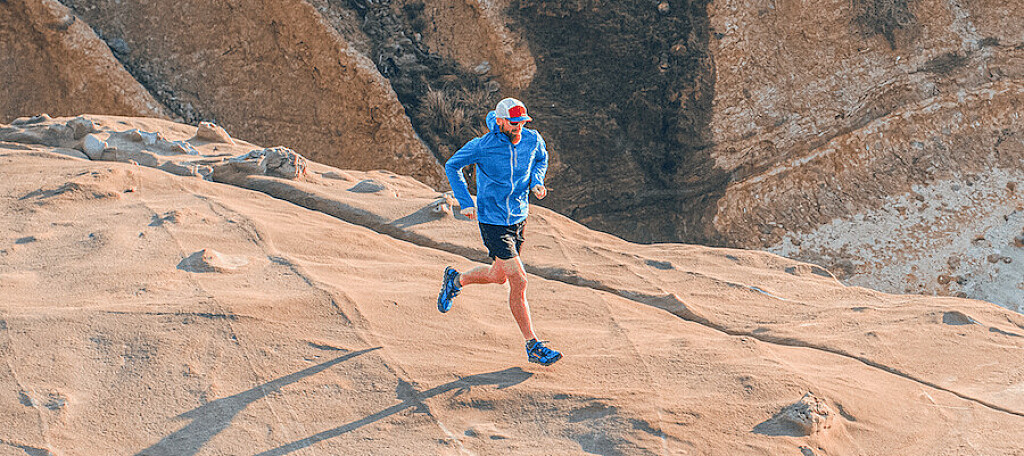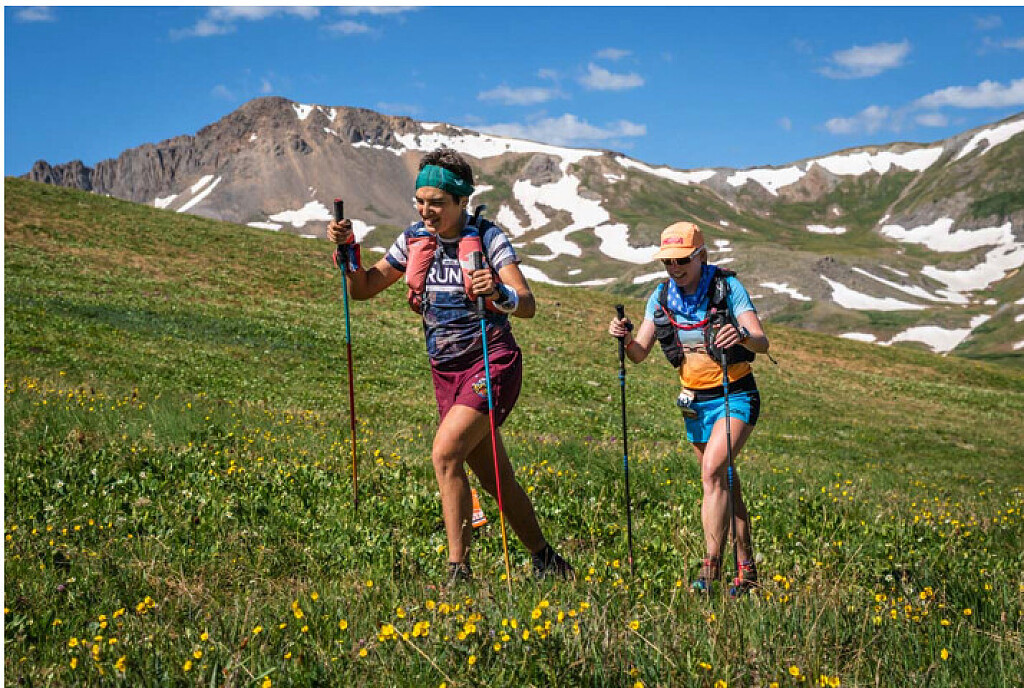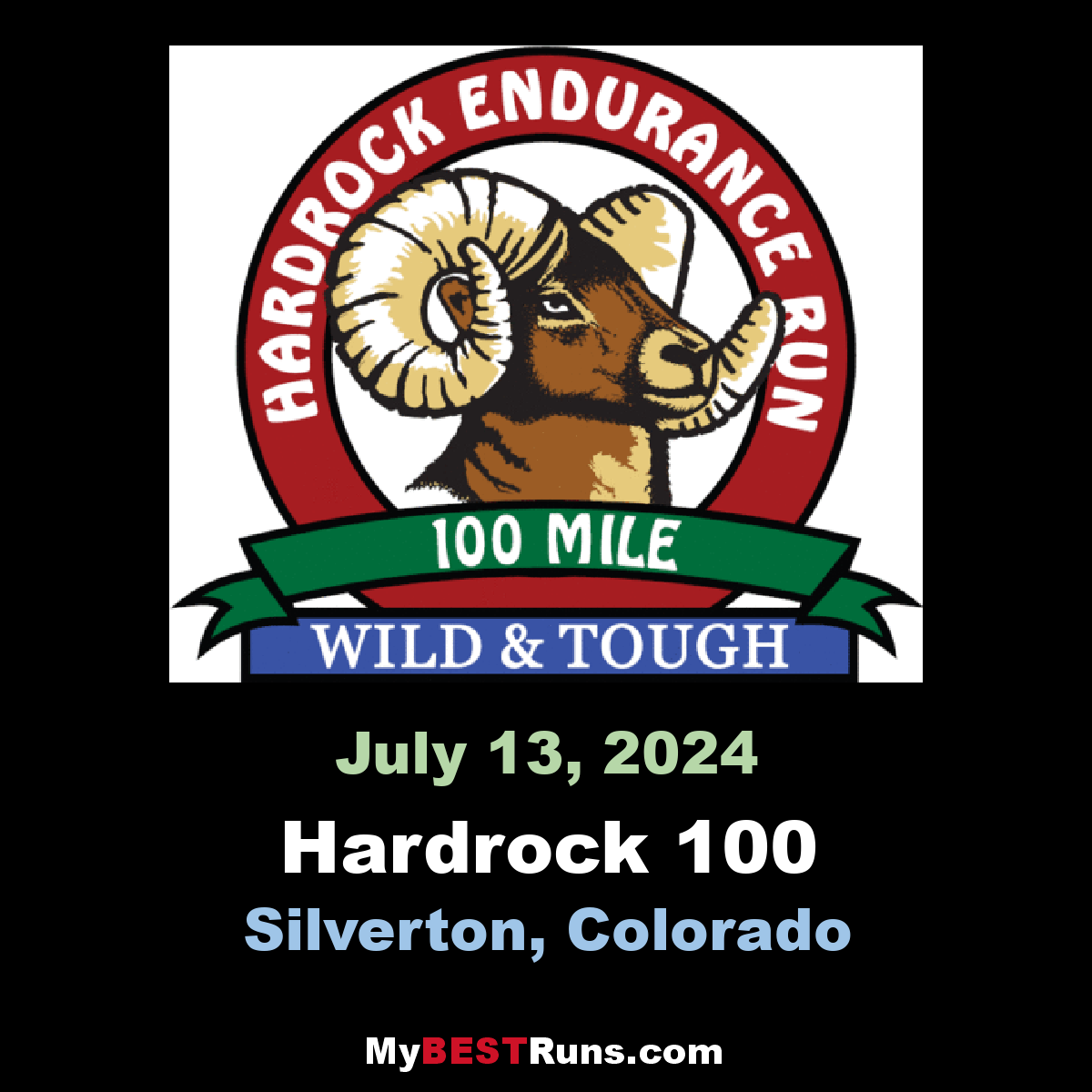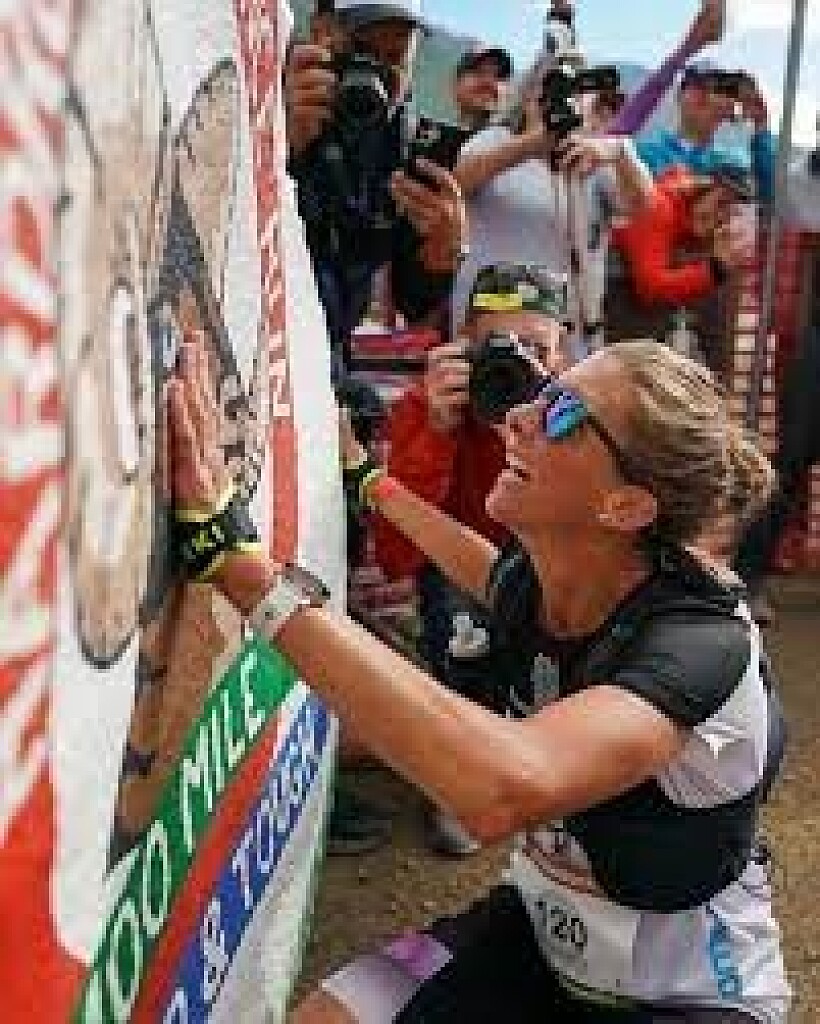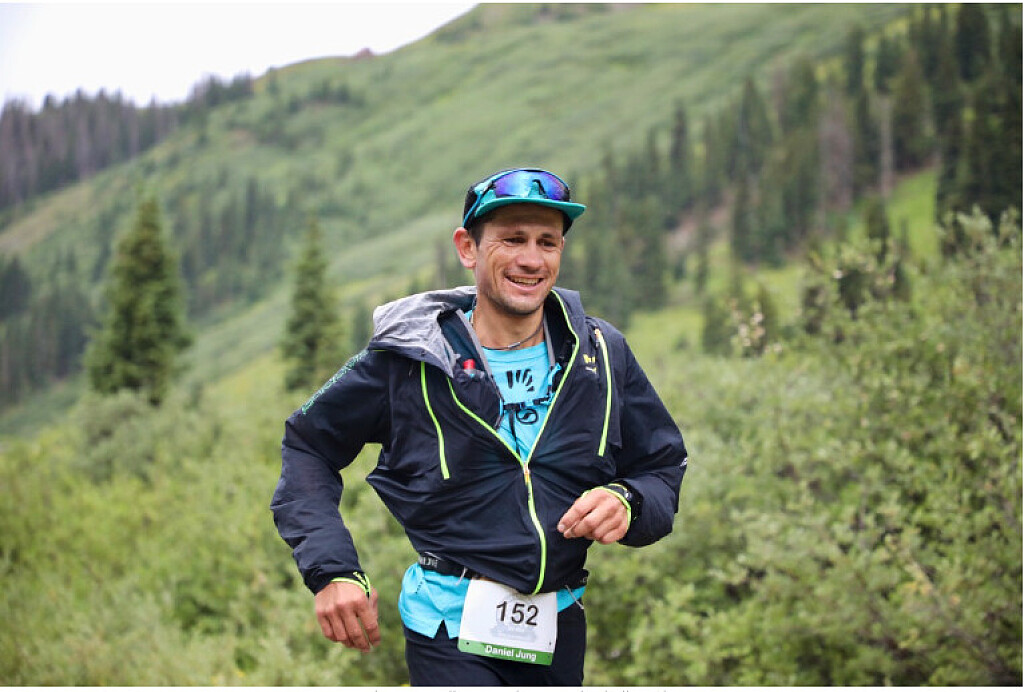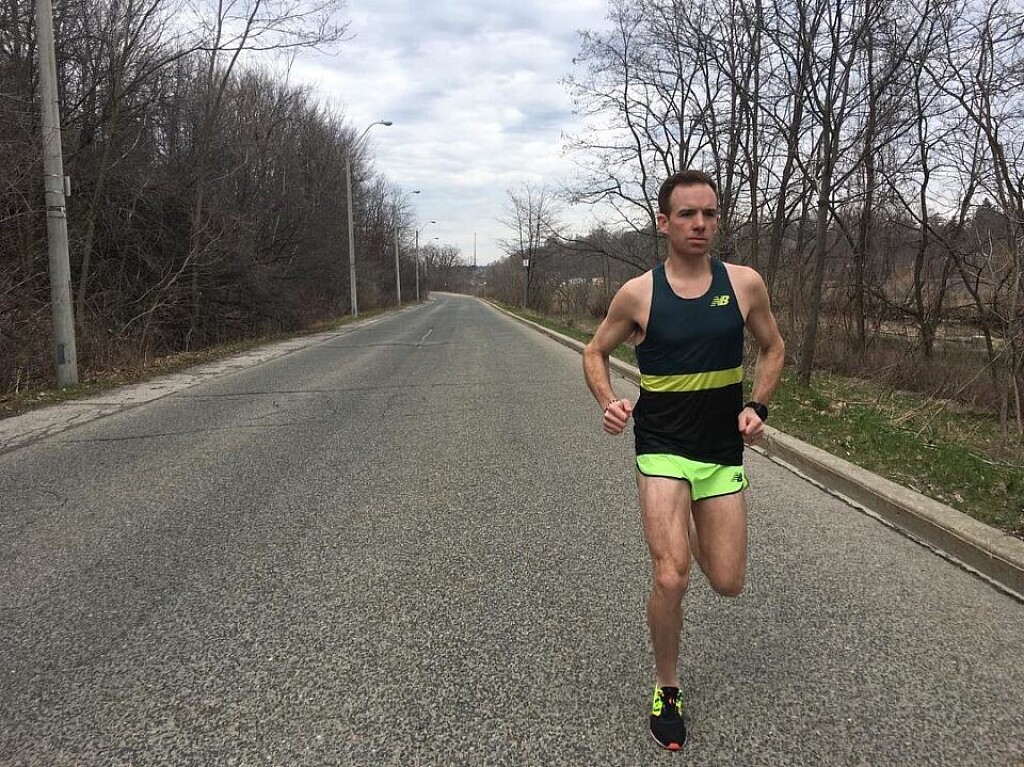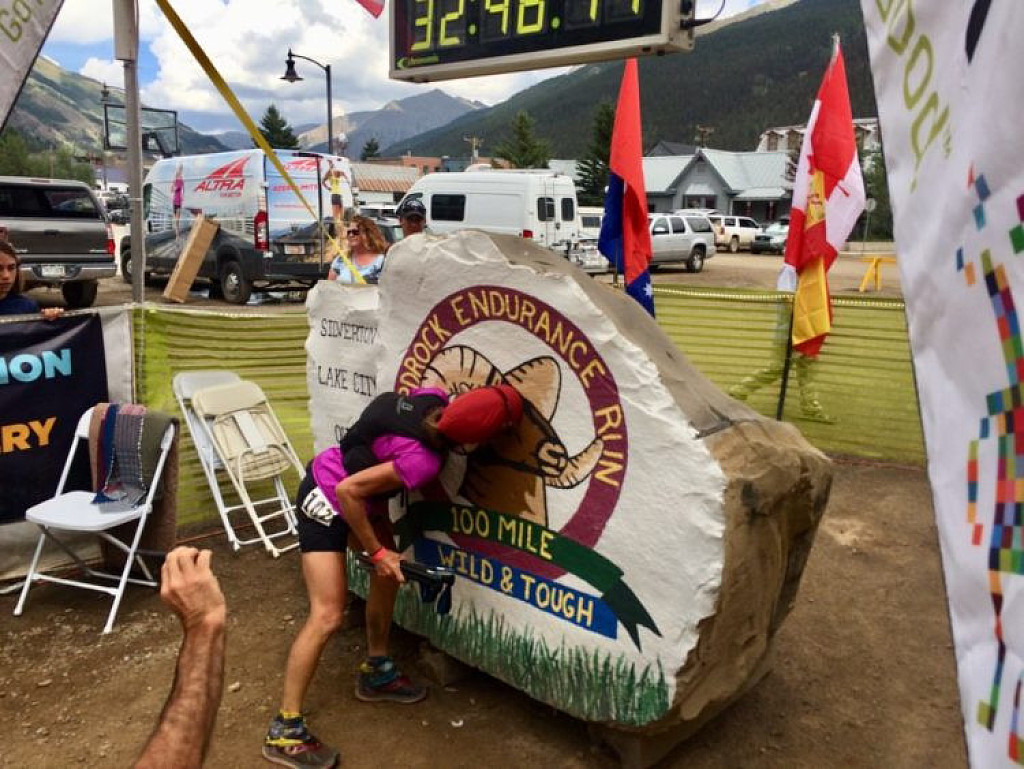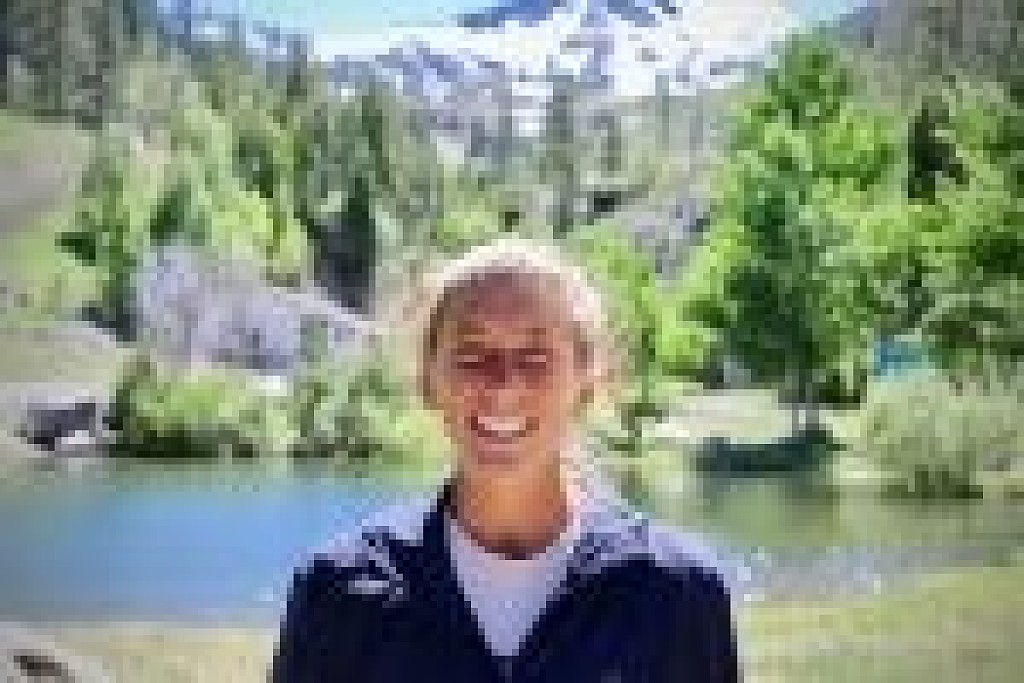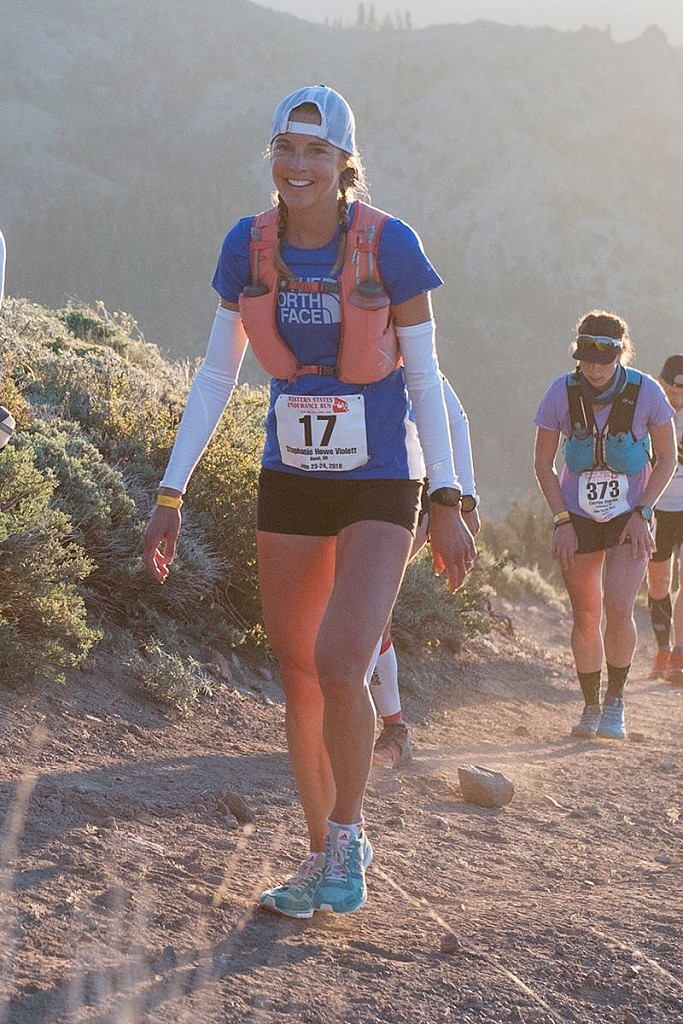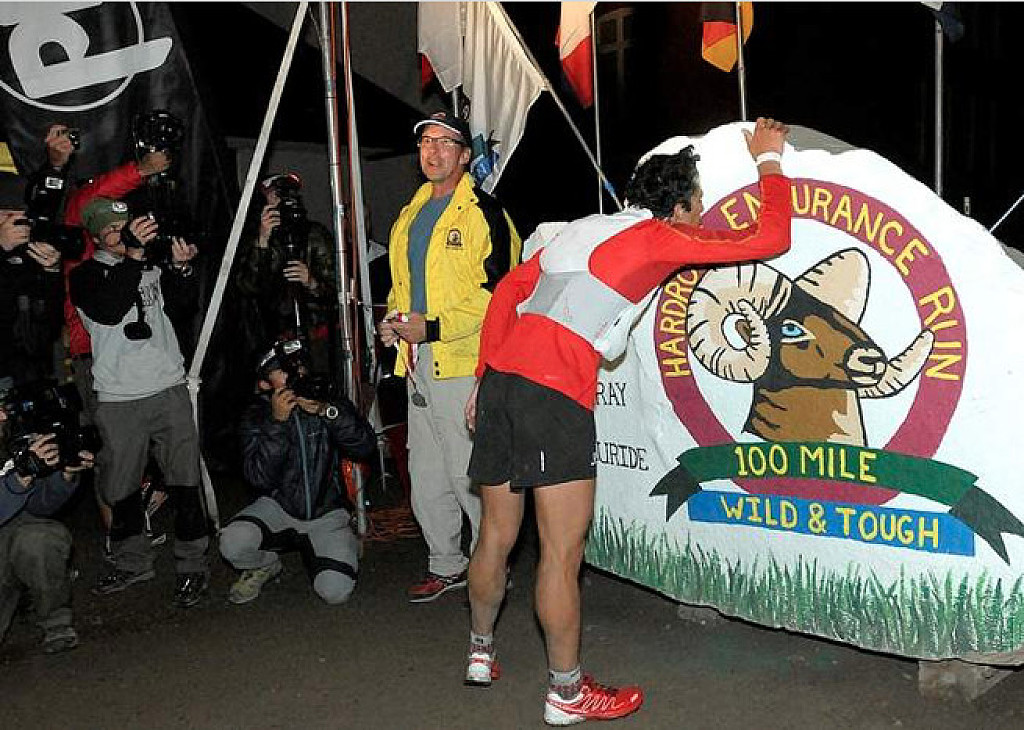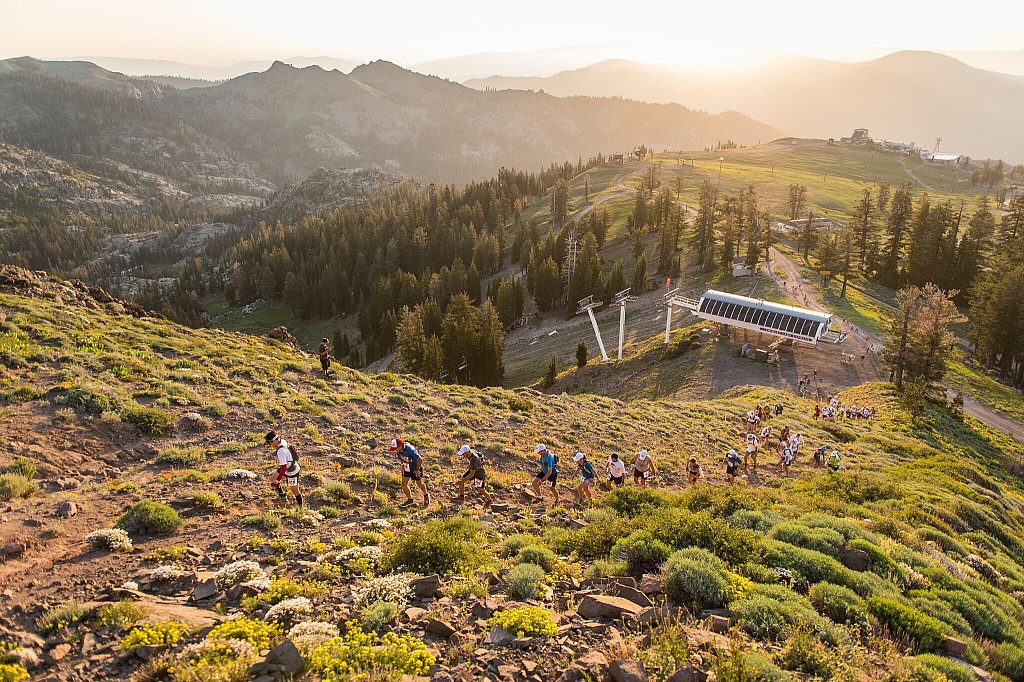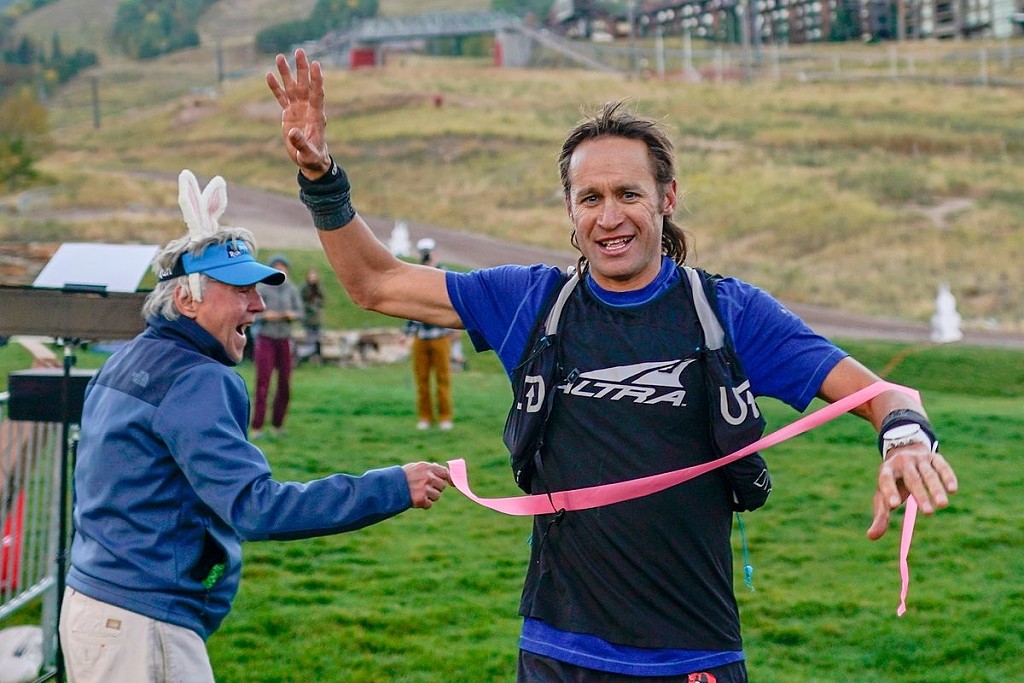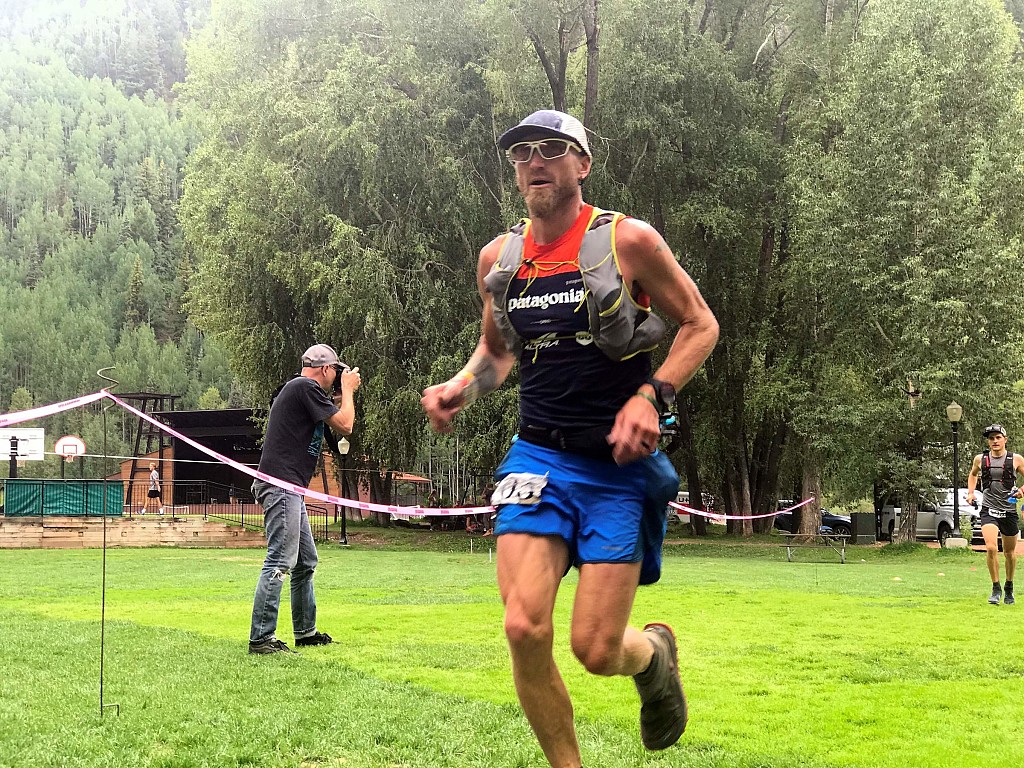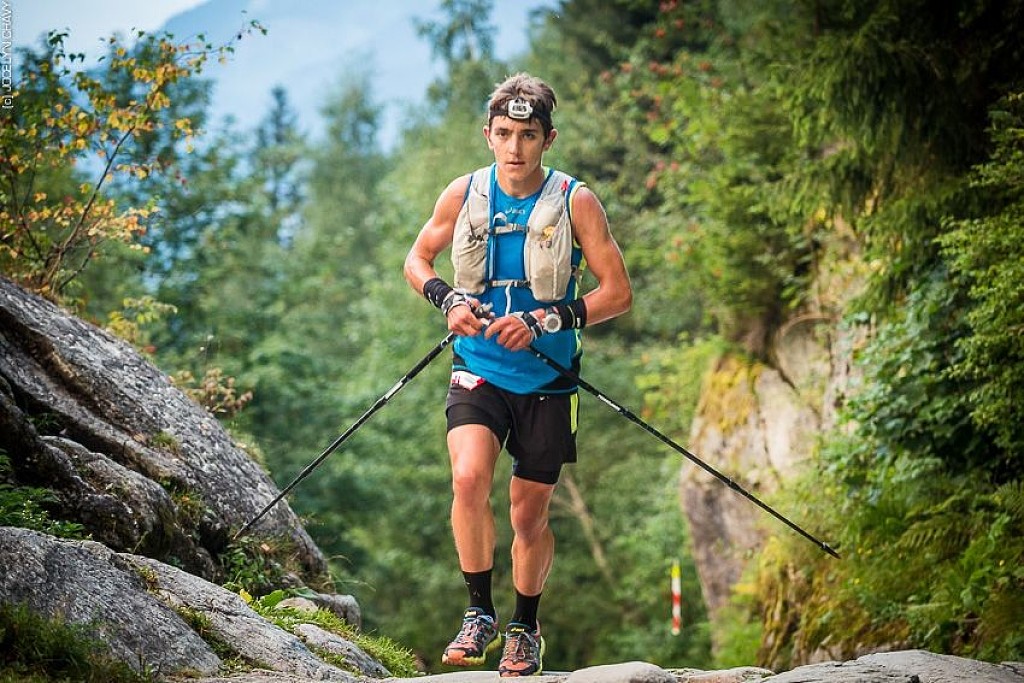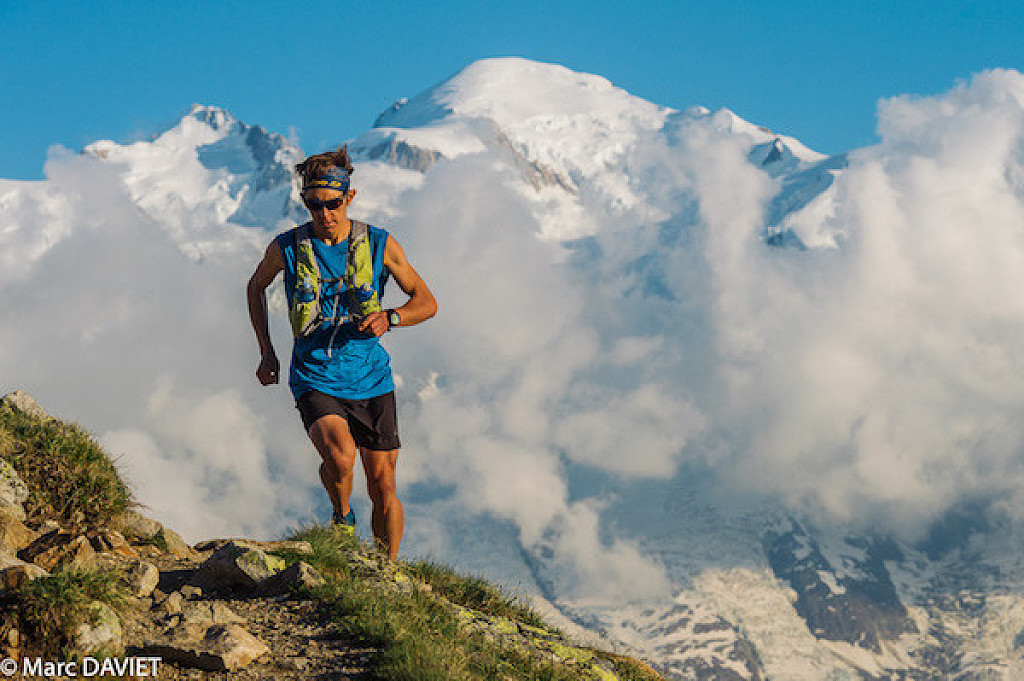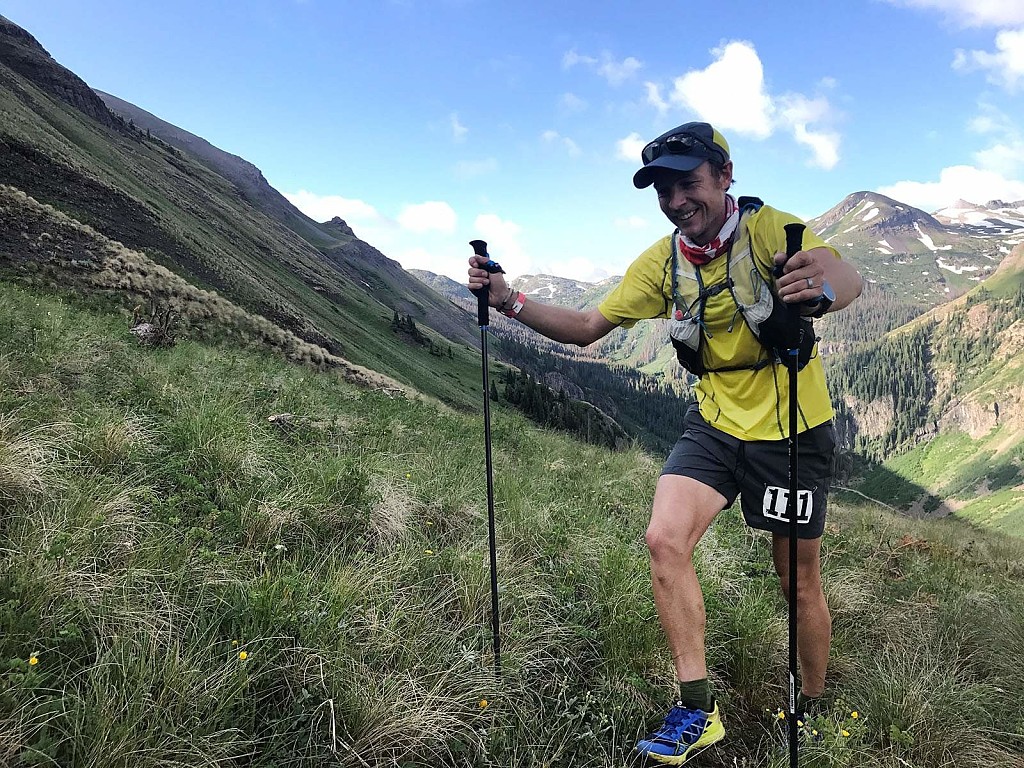Running News Daily
Running News Daily is edited by Bob Anderson. Send your news items to bob@mybestruns.com Advertising opportunities available. Train the Kenyan Way at KATA Kenya and Portugal owned and operated by Bob Anderson. Be sure to catch our movie A Long Run the movie KATA Running Camps and KATA Potato Farms - 31 now open in Kenya! https://kata.ke/
Index to Daily Posts · Sign Up For Updates · Run The World Feed
Articles tagged #Jeff Browning
Today's Running News
Why older runners are rocking the trails
Recent performances by Jeff Browning and Ludo Pommeret suggest that trail runners age like fine wine.
A fascinating trend has emerged in trail and ultrarunning: athletes in their 40s and 50s are not just competing—they’re thriving. Recent performances by American ultrarunner Jeff Browning (53) and France’s Ludovic Pommeret (49) are putting to rest the common belief that athletic performance declines with age. Instead, these trail runners are proving that experience, mental resilience and a well-honed training regimen can defy the clock. Why are trail runners getting better with age, and how are they doing it?
The power of experience
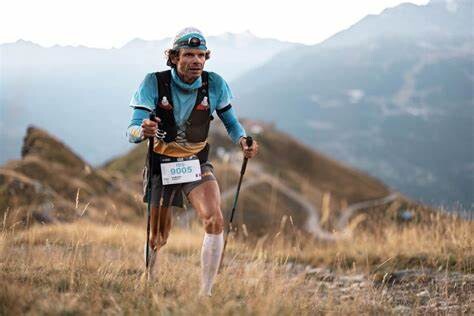
One of the key reasons trail runners are excelling later in life is the accumulation of experience and mental resilience built over time. Running on technical trails requires quick decision-making and the ability to stay calm under pressure, qualities that often improve with age. Pommeret won the UTMB 176K race at age 41 and placed fourth at this year’s edition, at the age of 49, after winning Hardrock 100 only six weeks earlier. Some of his success can be attributed to years of experience, which has taught him to manage his energy efficiently, pace himself wisely and navigate challenging terrain with confidence.
Research supports this idea, suggesting that older athletes possess greater mental resilience, allowing them to maintain focus and composure during long, grueling races. This psychological edge often compensates for any slight physical declines, enabling veteran runners to stay competitive.
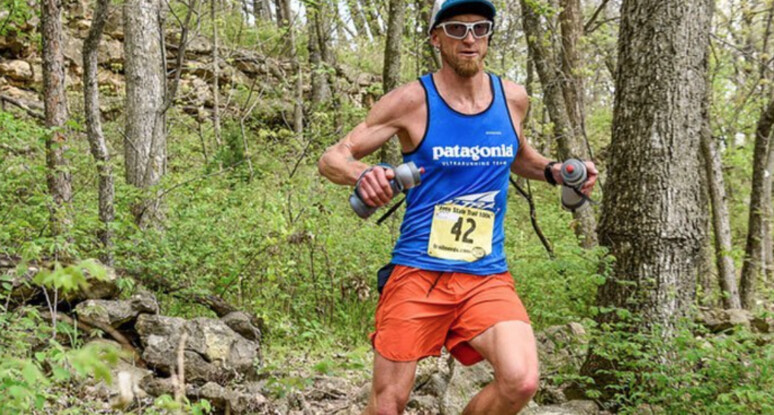
Adapted training and smarter recovery
Older trail runners are also better able to adapt their training to suit their aging bodies. Browning has consistently performed at the top level through his 40s and early 50s, most recently setting a supported FKT on the Colorado Trail at age 52 and placing second at this year’s Cocodona 250 (402 km) in Arizona. Browning emphasizes the importance of strength training, flexibility and strategic recovery. Instead of pushing through pain or ignoring signs of overtraining, experienced runners like Browning adjust their routines to prevent injury and enhance their longevity in the sport.
Research shows that strength training becomes increasingly important as we age, helping to maintain muscle mass, bone density and joint stability. Older athletes are also often more attuned to the need for adequate recovery, which is vital for avoiding burnout and ensuring sustainable performance.
Wisdom of pacing and nutrition
As trail runners age, they also tend to develop a keen sense of pacing and nutrition, partially due to familiarity with their own body. Unlike younger runners, who might go out too fast and burn out, more experienced runners understand the importance of conserving energy for the later stages of a race. They also become more meticulous about nutrition, recognizing that fueling their bodies properly can make the difference between finishing strong and hitting the wall.
Pommeret’s victory at the 2016 UTMB is a perfect example. After falling behind early in the race, Pommeret strategically paced himself, gradually working his way up the field to take the lead in the final miles. This kind of tactical acumen is often honed over years of racing experience.
Trail running is increasingly proving that age is just a number. with athletes like Pommeret and Browning demonstrating that with the right mix of experience, training adaptations, mental resilience and smart pacing, older runners can continue to compete—and win—at the highest levels.
by Keeley Milne
Login to leave a comment
2023 Hardrock 100 Women’s Race
If it wasn’t for Courtney Dauwalter (pre-race interview) running the Western States 100 just three weeks prior, crushing the women’s record there, and potentially being a bit worn out at the start line of the Hardrock 100, it would have been hard to find someone to bet against her winning the race this year. But if she were to falter, there were several women who were ready to jump at the opportunity.
For the first part of the race, it seemed like France’s Anne-Lise Rousset Séguret was going to do just that. While Dauwalter led in the very early miles of the course, Rousset opened up a sizable gap coming through Maggie Gulch at mile 15.5 and was moving with enthusiasm toward Pole Creek, the next aid station. She came into Sherman at mile 30 in seventh overall in 6:29, looking strong. Dauwalter was just six minutes behind, and Annie Hughes (pre-race interview) came in next, 52 minutes off the lead. With still many miles to run, it was still anyone’s race. Frenchwoman Claire Bannwarth (pre-race interview) came through just seven minutes later and was followed by Japan’s Kimino Miyazaki (pre-race interview), who was 1:22 off the lead but looking spry and happy.
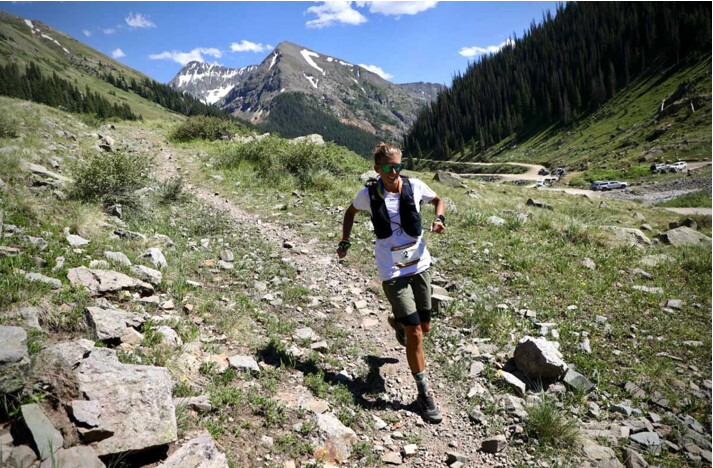
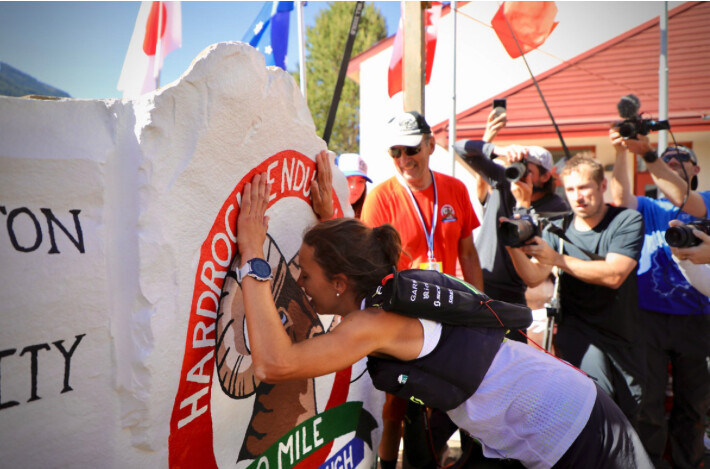
The top-two women came back together through Grizzly Gulch at mile 36 with Hughes trailing them at just under an hour back. When Rousset led Dauwalter into Grouse Gulch, mile 43.5, by nearly 10 minutes after traversing Handies Peak, the course high point, it seemed like maybe the Western States 100-Hardrock 100 double was going to be too much for Dauwalter to handle.
But it’s never a good idea to bet against the most dominant female trail ultrarunner of this generation. By mile 50, she’d closed the gap to four minutes, and in Ouray at mile 58.5, it was down to two minutes. When it came to the climb out of Ouray, Dauwalter made her move, and the elastic to Rousset finally snapped over the top of Virginius Pass. Dauwalter never looked back.
Meanwhile, Hughes stayed steady in third place while dealing with stomach issues and the rest of the women’s pack, including Miyazaki, Bannwarth, Christina Bauer, Whitney Mickelsen, Darla Askew, Becky Bates, and last-minute waitlist entrant Emily Halnon, who only got into the race the morning before, continued to chase — all within close proximity to each other.
Dauwalter ran into Telluride at mile 74.5, her pace still hovering just a few minutes over course-record pace, but now 23 minutes ahead of second-place Rousset, and executed the fasted crew stop of the Telluride aid station, getting in and out in under three minutes. She was on a mission.
Just 10 miles later, she was well below course-record pace, crushing the Bear Creek Trail climb out of Telluride and moving herself into third overall as some of the lead men began to falter. Rousset also continued her relentless march, and while she was 48 minutes back on Dauwalter at mile 84, she was only three minutes up on course-record pace.
In the end, there was no catching Dauwalter as she ran back to Silverton to kiss the rock with a new women’s counterclockwise course record of 26:14:08, besting the one set by the legendary Diana Finkel in 2009, and finishing fourth overall. She also set a new overall women’s record, beating her old time of 26:44:36, which she set last year.
Not only that, she set a new overall record for the Western States 100-Hardrock 100 double with a combined time of 41:43:42, beating Jeff Browning’s old record of 42:12:43 that he set in 2016.
Rousset would finish second after a gutsy run with a time of 27:29:55, which registers as the fifth-fastest time in event history, and Hughes would hold onto third with a time of 32:13:03 after spending nearly 100 miles battling stomach and breathing issues.With large gaps between the first, second, and third women, all eyes turned to the competition between fourth and 10th where the time gaps were tight and the women were often in the aid stations together in the back half of the race. Miyazaki and Bannwarth ran in close proximity to each other battling for fourth and fifth, while Mickelsen, Halnon, Bates, Askew, and Bauer seemed to maintain the same overall pace as the miles ticked by.
by Eszter Horanyi -I run far
Login to leave a comment
Hardrock 100
100-mile run with 33,050 feet of climb and 33,050 feet of descent for a total elevation change of 66,100 feet with an average elevation of 11,186 feet - low point 7,680 feet (Ouray) and high point 14,048 feet (Handies Peak). The run starts and ends in Silverton, Colorado and travels through the towns of Telluride, Ouray, and the ghost town...
more...2023 Hardrock 100 Men’s Race
Without any clear race favorite this year, the men’s race was wide open, and France’s Aurélien Dunand-Pallaz (pre-race interview) made the most of the opportunity to go to the front immediately, leading the race line-to-line. Even before the first mile was up, Dunand-Pallaz had opened up a gap on the rest of the field and never looked back, running steady and strong through the heat of the day and the dark of the night.
Behind Dunand-Pallaz, the race between the rest of the field never let up, but the gap to the leader continued to grow steadily as the hours passed. Silverton local Avery Collins (pre-race interview)led the early chase, along with Dylan Bowman (pre-race interview), who had finished second here in 2021. While Dunand-Pallaz was running his first Hardrock 100, Bowman had course experience on his side, and Collins had the course in his backyard to train on.Behind the two Americans, another Frenchman, Beñat Marmissolle (pre-race interview), was biding his time in third. Brian Culmo, Spaniard Javi Dominguez, Arlen Glick, former Hardrock 100 champion Jeff Browning, Paul Terranova, and Jesse Haynes rounded out the top 10 in the early miles of the race.Coming through the Maggie aid station at mile 15.5, it seemed like Dunand-Pallaz was going to give the men’s record a run for its money, coming in about 10 minutes under course-record pace. By this time, he was also 10 minutes up on Collins, who was running in second. While Dunand-Pallaz’s gap on the course record had disappeared by the time he dropped into the Sherman aid station at mile 30, his gap on the rest of the field had grown to 13 minutes, now with Marmissolle running in second with Bowman and Collins just a couple of minutes back. The rest of the top 10 remained unchanged.And aside from a few shuffles within the field, not a whole lot changed in the top 10 until the witching hours, after the heat of the day turned to the dark of night and legs started to get heavy. Then things started to change, and quickly. While the two Frenchmen continued their relentless march forward, both Collins and Bowman faltered, and it was Dominguez who left the Chapman aid station at mile 84 in third. Glick was fourth, Terranova fifth, and Browning sixth. Both Collins and Bowman took extended stops at Chapman to regroup, losing their positions but eventually headed back out on the trail to finish.While others struggled behind him, Dunand-Pallaz crested the last climb well clear of the field. Marmissolle followed 40 minutes back. And from there, it was almost all downhill for the two Frenchmen. Dunand-Pallaz ran back into Silverton to kiss the rock and win his first Hardrock 100 in 23:00:07, the eighth-fastest time in history.
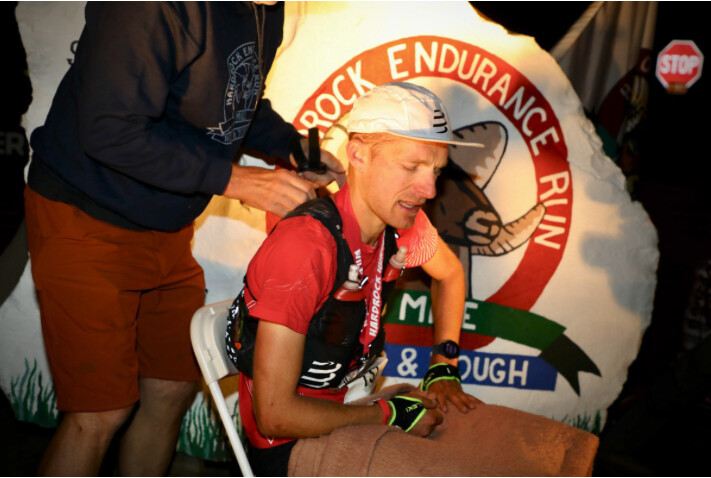
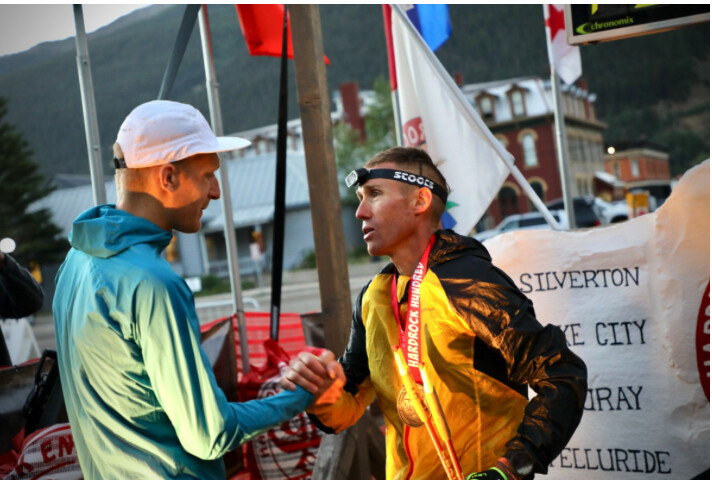
Marmissolle finished second and was followed by Dominguez who ran a steady and smart race from start to end finished third in 26:12:01. Glick finished fourth with a time of 26:43:05, and Browning would round out the top five with a time of 27:17:02.
by Eszter Horanyi -I Run Far
Login to leave a comment
Hardrock 100
100-mile run with 33,050 feet of climb and 33,050 feet of descent for a total elevation change of 66,100 feet with an average elevation of 11,186 feet - low point 7,680 feet (Ouray) and high point 14,048 feet (Handies Peak). The run starts and ends in Silverton, Colorado and travels through the towns of Telluride, Ouray, and the ghost town...
more...Hardrock 100 preview: will Courtney Dauwalter do it again?
The Hardrock Hundred Mile Endurance Run (HR100), known for its high altitude, deep elite field and challenging entry process, begins Friday at 8:00 a.m. E.T. This year’s event, the first ever to be live-streamed, promises to be a thriller. Runners will encounter over 10,000 metres of elevation gain while facing extreme weather conditions, navigating treacherous terrain and attempting to avoid altitude sickness.
Only 140 participants get to line up at Hardrock each year, and this year’s contenders include the remarkable Courtney Dauwalter, fresh off a jaw-dropping performance and course record at the Western States 100, and other well-known elites. The race will be live-streamed on the Run Steep Get High YouTube channel. Here’s what you need to know to follow along.
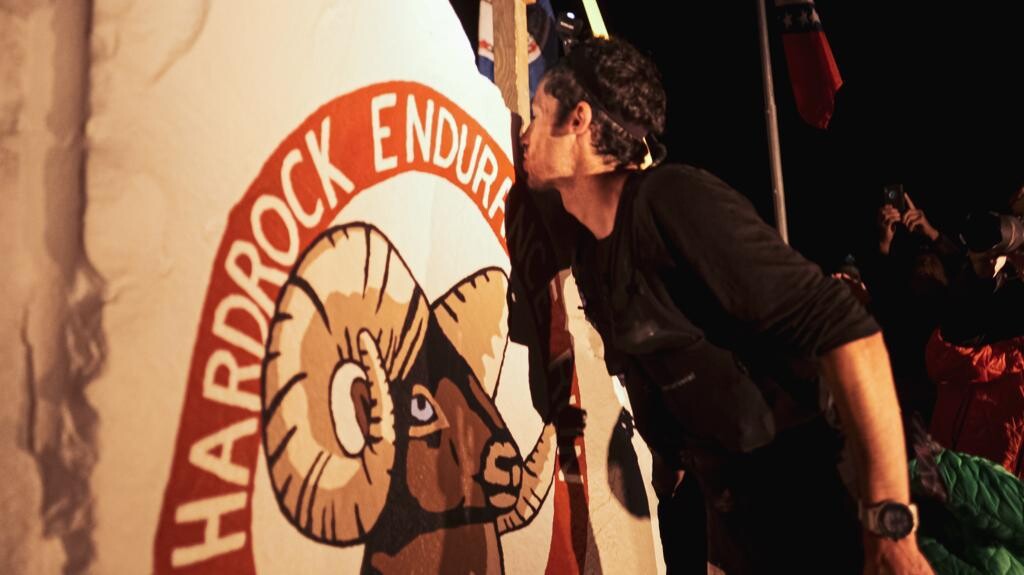
HR100 both begins and ends in Silverton, Co., and athletes are above 3,300 metres elevation for much of the race. It was founded in 1992 as a tribute to the miners who used to follow “their mules and instincts, prospecting the San Juans for gold, silver, and other metals,” the race website explains. With a finishing cutoff time of 48 hours, athletes know they are in for a long haul. The course switches directions every year, and this year runners are moving counter-clockwise around the looped course.
The women’s race

All eyes are on the phenomenal Dauwalter this year (but when are they not?) after a stunning performance three weeks ago at Western States, where she set a blistering new course record (78 minutes faster than Canadian Ellie Greenwood’s from 2012) and placed fifth overall. Canada’s Stephanie Case, who was second last year, has withdrawn from this year’s event. 60-year-old legendary ultra machine Pam Reed of Jackson Hole, Wyo., will be tackling the third part of her WSER/Badwater 135/HR100 triple this year.
Leadville, Colo.-based Dauwalter holds the course record for HR100 in the clockwise direction (26:44) from 2022; this year runners will move counter-clockwise, and that course record is 27:18 for women, set by Diana Finkel in 2009, and Dauwalter will most certainly be looking to challenge that time. Will her legs be tired? Will she win the entire thing? We can’t wait to find out.
Also from Leadville, 23-year-old trail phenom Annie Hughes won the Run Rabbit Run 100-Miler and High Lonesome 100 Mile in 2022, and the Leadville 100 Mile in 2021. She’s a high-altitude ultrarunning champ, and has also compiled some wins in really long races–she won the Cocodona 250 Mile in 2022 and Moab 240 in 2021.
If you haven’t heard of France’s Claire Bannwarth, it’s time to brush up: she was the first woman in the 432-kilometre 2022 Winter Spine Race (by more than 24 hours), and will be making her North American racing debut at HR100. Bannwarth races prolifically and runs long–she will be jumping into the Tahoe 200 Mile race a week after HR100.
Colorado’s Darcy Piceu, fresh off the waitlist, is a veteran of HR 100, with the 2023 edition being her 10th running. Piceu boasts three wins and five second-place finishes, and she was fourth in 2022.
The men’s race
With Kilian Jornet, last year’s winner (and course record holder in the clockwise direction) not returning this year, the podium seems up for grabs. None of the other top four men from 2022 will be headed to the San Juans, but a very accomplished group of athletes will be lining up and fans will be eager to see who holds up to the HR100 test.
Ohio’s Arlen Glick is a master of the 100-mile distance, running 12:57 to win the Umstead 100-miler in April and taking a speedy third at October’s Javelina 100. Like Dauwalter, Glick raced at WSER last month. He placed 14th, while he took third in 2022. Glick will be a hot contender and fascinating to watch at HR100.
California-based Dylan Bowman is a Hardrock veteran, placing second at the 2021 edition. Bowman has had a lower racing profile in the past year while working on Freetrail, a media business and trail running community. He’s been training in the San Juans pre-race and is eager to showcase his ability.
France’s Aurélien Dunand-Pallaz has over 10 years of ultrarunning success, but gained notoriety in 2021 when he took second at UTMB and won Spain’s Transgrancanaria. He missed the 2022 edition of HR100 for the birth of his child and is a favourite in his debut this year.
Oregon-based trail running legend Jeff Browning will be taking on his sixth Hardrock at age 51. Browning won in 2018, and finished fifth the past two years. In October, Browning won the Moab 240 in 57 hours, and more recently, he showcased his fitness by winning the Bighorn 100.
by Keeley Milne
Login to leave a comment
Hardrock 100
100-mile run with 33,050 feet of climb and 33,050 feet of descent for a total elevation change of 66,100 feet with an average elevation of 11,186 feet - low point 7,680 feet (Ouray) and high point 14,048 feet (Handies Peak). The run starts and ends in Silverton, Colorado and travels through the towns of Telluride, Ouray, and the ghost town...
more...2022 Hardrock 100 Men’s Race
The men’s race at the 2022 Hardrock 100 finished pretty much in line with expectations – with an epic showdown between two of the greatest talents ever seen in the sport – Kilian Jornet (pre-race interview) and François D’Haene (pre-race interview). But there was plenty more action along the way, with bold moves from Dakota Jones (pre-race interview), and some strong running further back the field. Here’s how this year’s clockwise action played out.
From the start, the runners made a fairly predictable formation at the front of the field. Dakota Jones, Francois D’Haene, and Kilian Jornet led the charge, running together, with Jones joking with one of our reporters that they had agreed to finish in the aforementioned order. A very happy looking Dani Jung followed close back from the leaders in fourth at the KT aid station at mile 11.5, with John Kelly three minutes later in fifth. There was a gap of ten minutes or more from this front pack to Jeff Browning and Luke Nelson, who looked to be taking it very easy in sixth and seventh.The front trio remained within a few strides of each other the whole way into Ouray at mile 44, and although looking relaxed, they were already twelve minutes up on course record pace. Jung still followed in fourth, but the gap had widened to almost half an hour. He still looked very fresh and appeared to be taking the high road and running his own race, rather than getting caught up in anything outside of his comfort zone. The next three positions — Kelly, Browning, and Nelson — also remained unchanged with Kelly appearing more sombre than the others, but still making a fast turnaround in the aid station.
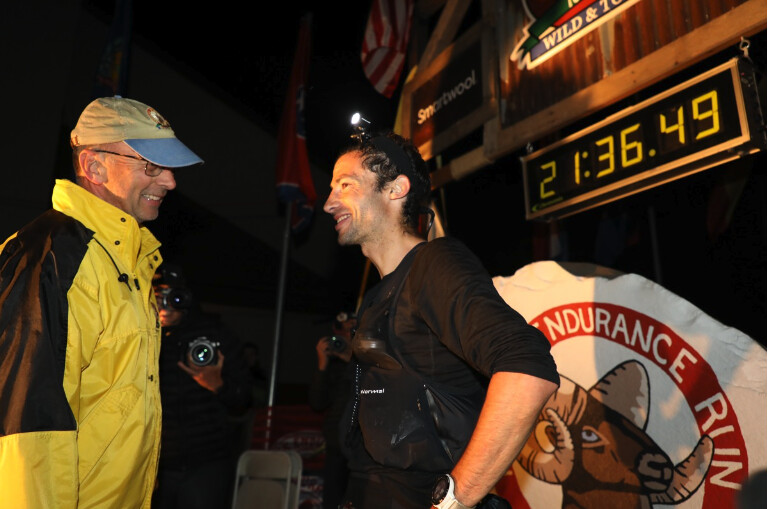
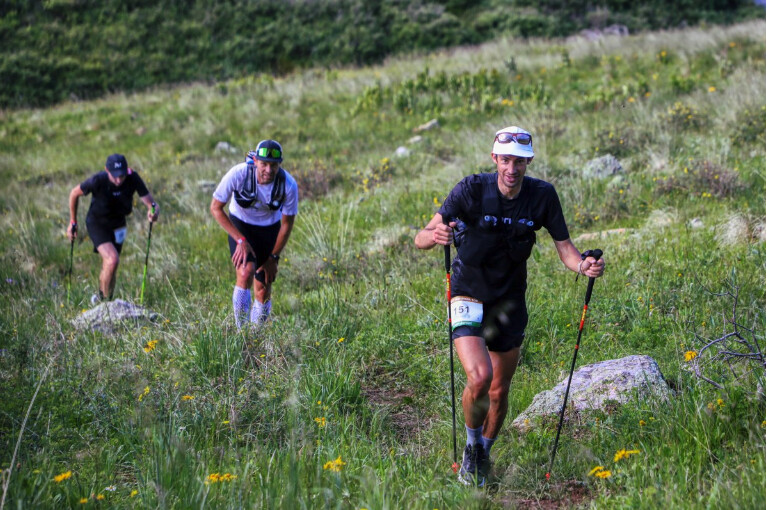
Jones was the one to make the move that cracked the front trio, and he came into the Engineer aid station at roughly the halfway point 11 minutes clear of Jornet and D’Haene, who remained together. Jung held on steadfastly in fourth, and former Hardrock champion Browning had moved up to take fifth from a struggling John Kelly.Jones continued to lead the way through Grizzly Gulch, two-thirds of the way into the race, but the Euro duo of Jornet and D’Haene had begun to close. By Sherman at mile 73, the two had joined forces, entering and leaving the aid station together eight minutes ahead of Jones.
They continued to run within seconds of each other, but by Cunningham Gulch at mile 93, there was a notable shift in tone as the race had begun in earnest. Jornet was the first to leave the aid station with D’Haene following seconds later. D’Haene looked strong and can never be underestimated in the finish, but after the headtorches began to flicker on the final descent through Arrastra Gulch, it was Jornet who emerged first from the darkness, having put five minutes on his friend and opponent in the roughly four-mile stretch.
Jornet powered through to the finish, taking his fifth victory in five Hardrock starts, and a clockwise and overall course record in a time of 21:36:34. D’Haene followed and touched the rock at 21:51:21, which was also under the original clockwise record from Jornet’s 2014 run.Further back, despite losing hold of first place, Dakota Jones never stopped pushing and took third in a strong 23:06:19, making his pre-race goal of breaking 24 hours.
An emotional Dani Jung came home in fourth, a position he held essentially all race, in a time of 25:53:47. This is just the beginning of Jung’s season, with UTMB and Diagonale des Fous still to come, and it will be interesting to watch him build on this performance.Jeff Browning was next home, finishing his sixth Hardrock in a time of 26:17:47, saying at the finish “It doesn’t get any easier.”
by Bryon Powell and Sarah Brady I run far
Login to leave a comment
Hardrock 100
100-mile run with 33,050 feet of climb and 33,050 feet of descent for a total elevation change of 66,100 feet with an average elevation of 11,186 feet - low point 7,680 feet (Ouray) and high point 14,048 feet (Handies Peak). The run starts and ends in Silverton, Colorado and travels through the towns of Telluride, Ouray, and the ghost town...
more...Is Multiple 100-Mile Races In A Single Season Too Much?
Jim Walmsley absolutely destroyed the competition and the course record at the 2018 Western States 100. Rather than kicking back and enjoying the win, however, Walmsley needed to quickly return to training for the Ultra Trail du Mont Blanc (UTMB) just two months later. While he started out strong in UTMB, he eventually took a DNF, his legs drained of all energy.
Now that he's had time to reflect, Walmsley admits that top results at two 100-milers within a couple of months might be a stretch.
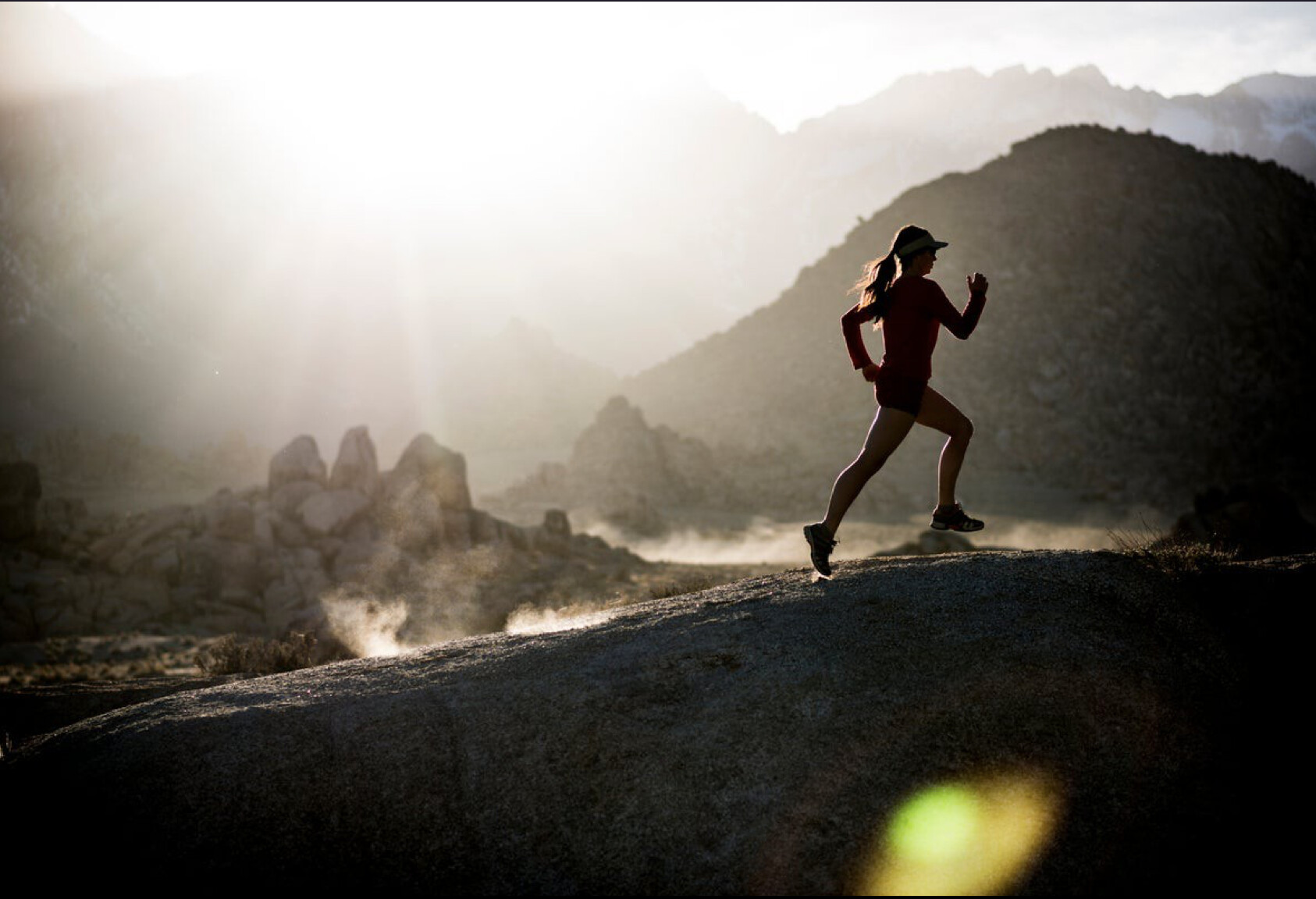
"My training went well and I was able to get in more tapering for UTMB than last year," he says. "But the combination might be asking too much."
The experience has left Walmsley reconsidering how he might approach his 2019 season.
Walmsley's two-big-100s-in-a-season approach is something several elites have attempted, with mixed results-Darcy Piceu, Jeff Browning and Karl Meltzer, among them. Fellow elite Tim Tollefson focuses only on UTMB each year. Magda Lewy Boulet passed over Western States in favor of a good go at UTMB as well (both Tollefson and Boulet took hard falls and had to pull out last year).
Which begs some questions: Is more than one 100-miler feasible in a given season? And how does the question differ for elites vs amateurs?
Figuring the Formula
The formula for successful marathoning (if your definition of success is placing well) is somewhat tried and true at no more than two per year, says Mario Fraioli, author of the "Morning Shakeout" and coach to Tollefson.
"For most athletes, even elites, racing two high-level marathons a year, between the buildup, the race itself and recovery afterward, is a big ask of the body and mind," he says. "Two a year is all most people can handle if they're committed to training properly, performing optimally and recovering adequately."
In contrast, runners and coaches are still tinkering with the right mixture of 100-milers. It pays to consider the toll that mileage takes on your body, a toll that varies depending on distance and how hard your effort was.
Recovery First
"The intensity of a 50K or 50-miler is a lot higher than it is during 100," Fraioli says. "On the flipside, 100 miles is a lot longer time to be out on your feet and more things can go wrong. Your body goes through a lot when it's out for that long (as does your mind), the nutritional demands are different, sleep gets affected, and it just beats you up in a different way under the hood."
Ian Sharman, coach and founder of Sharman Ultra Endurance Coaching, says that pulling off multiple 100s in a season is doable, but should be a game of patience.
"Unlike marathons, where being in top shape on race day is necessary for hitting goal pace, ultras are more forgiving," he says. "Someone like Walmsley can go into a 100 out of peak shape and that won't be the biggest factor for how the day goes."
Temperature, nutrition, trail conditions and the way a race unfolds within the field all play a role, as can plain old luck. Consider the falls that took out several top contenders at UTMB last year, as well as the blistering pace laid down by the early leaders-a pace that eventually chewed them up and spit them out.
Still, Sharman says, elites and amateurs alike should take a long time to build up to the challenge of two or more 100s in a year. "Don't get greedy," he cautions. "Make that first race a big deal, and then wait to see how recovery goes."
That means not fixing a set time to recover or having a second 100 lined up. "Listen to what your body and mind are telling you and don't force the issue," Sharman says.
Look for positive recovery signs like a return to normal resting heart rate, the ability to get a good night's sleep, lack of muscle soreness and mental enthusiasm for a return to training. All indicate you may be ready to return to more normalized training and, eventually, racing.
Fraioli says that because Tollefson is still relatively new to the 100-mile distance, as a team they have approached it conservatively. "A big reason is that at his level, there's a physical and psychological toll to the volume and intensity," he says. "The prep is arduous and we need to build in adequate recovery."
The rules for amateurs, however, will take on a different appearance.
What About the Rest of Us?
For amateurs, the edge needn't be as sharp. "Many age groupers are running 100s as an experiential event-it's not their job," Fraioli explains. "But the same principles of recovery should apply."
That means not jumping back into training quickly after the first event. "You have an incredible base built up from that first race and that's probably your best training for your second," says Fraioli. "Detach from a schedule and keep your running loose and unstructured."
Until you've reached a fully recovered state, run when you feel like it, leave the speedwork at home and keep distances and paces on the shorter/easier side.
That was the approach Jason Bahamundi of Dallas, Texas, took in 2016, when his desire to qualify for the Western States lottery forced him into running two 100s, by accident, just two weeks apart. With seven 100s and several other ultras under his belt, the consistently high-placing age-grouper Bahamundi treaded cautiously in order to pull the double off.
"I ran the Coldwater Rumble in January, mistakenly assuming it was a WS qualifier," he says. "It wasn't so I began looking for a second option. Rocky Raccoon was two weeks later, so I went for it."
Knowing that his only focus between the two races was recovery, Bahamundi completed only a handful of runs, all five miles or shorter.
"I focused on eating healthy and getting plenty of sleep," he says. "I needed the swelling to go down so I'd be prepared to race again."
He also approached the second 100 with a conservative mindset. "I was only concerned with finishing and I know I can walk a 15- to 18-minute mile and still finish under 30 hours," says Bahamundi. "I was able to finish out in 20 hours, three hours faster than at Coldwater. Rocky Raccoon is an easier course so you can wear yourself out pretty quickly if you're not careful."
Your Mileage May Vary
Fraioli says that the quest to run multiple 100s in a season will look different for each runner and that there's no real blueprint to follow. That said: "As a general rule, prioritize rest, recovery and cross training between 100-mile efforts," says Fraioli. "For most people, you won't have to rebuild the wheel in between, but you do have to recover and reset so that you're ready to go to the well again."
"There are more ultras and more interest in running 100-milers than ever," he says. "There's just not much data available yet to understand the toll they will take on a body, so everyone has to figure out their own balance
by Trail Runner Magazine
Login to leave a comment
Canadian Reid Coolsaet set to run the 2022 Western States 100
The lotteries for the 2022 Western States 100 and Hardrock 100 took place this weekend, and Canadian Olympian Reid Coolsaet got his name on the Western States list. With over 8,000 applicants vying for only 340 lottery spots (221 for Western States and 119 for Hardrock), runners without automatic entry have a slim chance of having their names pulled, but 34 lucky Canadians got a spot on the start lines.
Western States
Of the top 10 male finishers at last year’s race, eight will be making their return to Olympic Valley, Calif., including second- and third-place finishers Tyler Green and Drew Holmen. Jim Walmsley, who won the race in 2018, 2019 and 2021 (the race was canceled in 2020 due to COVID-19), has not elected to return for the 2022 race. The top three podium finishers from last year’s race, Beth Pascall of the UK, Ruth Croft of New Zealand and Ragna Debats of the Netherlands, will all be returning, as will six more of the top 10 women from 2021.
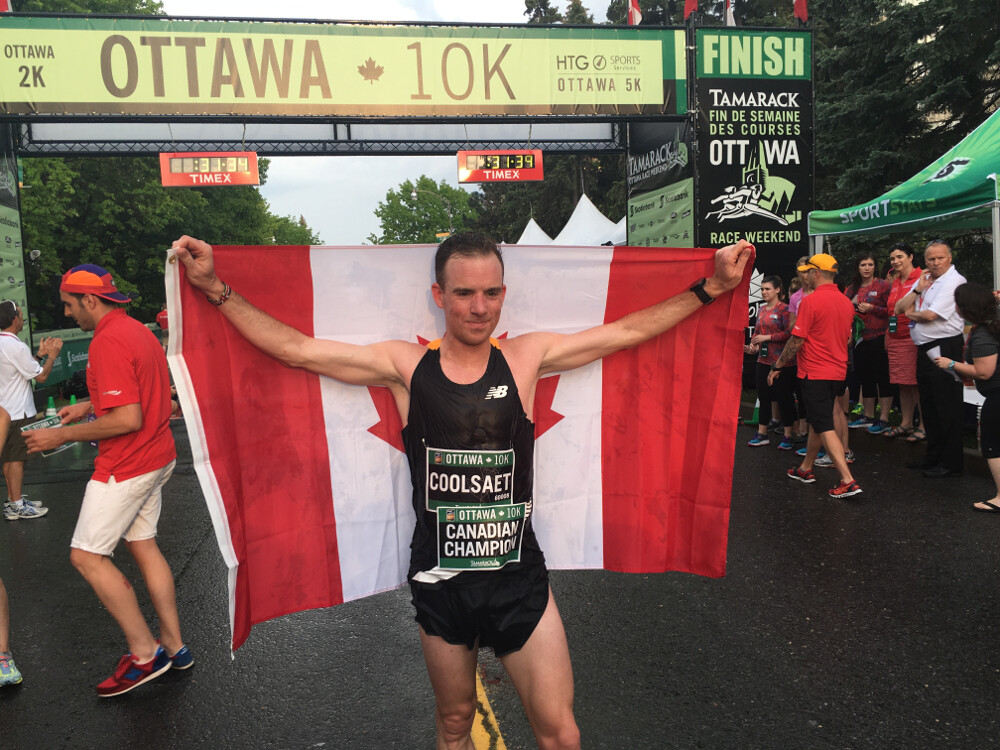
Canada’s Ailsa MacDonald received automatic entry, thanks to her 13th-place finish at the 2019 Western States and first-place finish at the 2020 Tarawera 100 Mile. Other fast runners who have received automatic entry include Sébastien Spehler (second at Ultra Trail Cape Town this year), Tom Owens (fourth at UTMB in 2019), Cole Watson (third at the Javelina Jundred), Stephanie Auston (third at the 2020 Black Canyon 100K and second at the 2019 Tarawera 100K) and Zoë Rom (third at the 2021 Rio del Lago 100 Mile and third at the 2021 Tillamook Burn 50 Mile), among others.
Coolsaet will be one of the top Canadians in the race, despite being relatively new to the ultramarathon scene. In August, he won his first-ever ultra, the Quebec Ultra Trail 110K, despite missing a turn and having to run an extra 10 kilometres. He will be joined by several other Canadians, including:
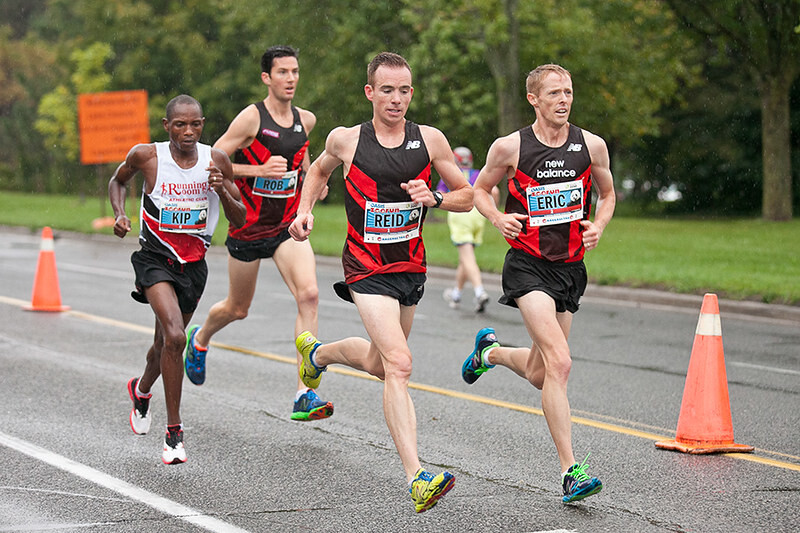
Leo Fung, Calgary
Jesse Hulley, Calgary
Mike Jollie, Calgary
Kevin Jansen, Calgary
Rohan Aurora, Vancouver
Steve Day, North Vancouver
Adam Harris, Squamish, B.C.
Patrick Humenny, Kimberly, B.C.
Ricardo Tortini, Port Moody, B.C.
Dawson Mossman, New Maryland, NB
Aytug Celikbas, Oakville, Ont.
Matt Lowe, Hamilton
Derek Mulhall, Tecumseh, Ont.
Norman Nadan, Orangeville, Ont.
James Swartz, Toronto
Vincent Gauthier, St-Zotique, Que.
Fanny Barrette, Calgary
Tara Chahl, Edmonton
Chelsey Topping, Lethbridge, Alta.
Kelly Haston, Toronto
Karen Holland, Kimberly, Ont.
Hardrock 100
Hardrock is particularly difficult to get into, because the only way to gain automatic entry into the race is by winning it the previous year. A unique addition to this year’s lottery: entrants who were chosen for last year’s race but were unable to travel because of COVID-19 were given automatic entry for 2022, which included 16 men and two women.
There are some big names on the 2022 start list, including Courtney Dauwalter, Sabrina Stanley, Magie Guterl, François D’Haene, Kilian Jornet, John Kelly, Luke Nelson and Jeff Browning. Canada’s Stephanie Case, who was the first woman (and third overall) at the 450km Tor des Glaciers race in Italy, will also be on the start line.
Other Canadians who received entry into Hardrock include:
Suzanne Johnson, North Vancouver
Dana Samis, North Vancouver
Joanna Ford, Calgary
Larry Kundrik, Lethbridge, Alta.
Ken Legg, Powell River, BC
Randy Duncan, Victoria, BC
Christopher Aubrey, Sherwood Park, Alta.
Nathaniel Couture, Fredericton, NB
Matthew Fortuna, Oyama, BC
Leo Fung, Calgary
by Brittany Hambleton
Login to leave a comment
Western States 100
The Western States ® 100-Mile Endurance Run is the world’s oldest and most prestigious 100-mile trail race. Starting in Squaw Valley, California near the site of the 1960 Winter Olympics and ending 100.2 miles later in Auburn, California, Western States, in the decades since its inception in 1974, has come to represent one of the ultimate endurance tests in the...
more...François D'haene, Sabrina Stanley win first Hardrock 100 in three years
After two successive cancellations (one due to snowfall and one to COVID), the Hardrock 100 took place in Colorado’s San Juan mountains on Friday, and it was worth the wait. French ultratrail superstar and three-time UTMB winner François D’haene was strong from the start, and powered through to a 21:45:51 finish early Saturday – the fastest time anyone has run the course, counterclockwise or overall (both records were held by Kilian Jornet, who did not run this year).
Defending champion Sabrina Stanley of Silverton, Colo. (where the looped-course race starts and finishes) won the women’s race in 27:21:48 – the second fastest women’s finish ever, and her second time racing Hardrock. Stanley was sixth overall, and was on pace for a course record until approximately mile 80.
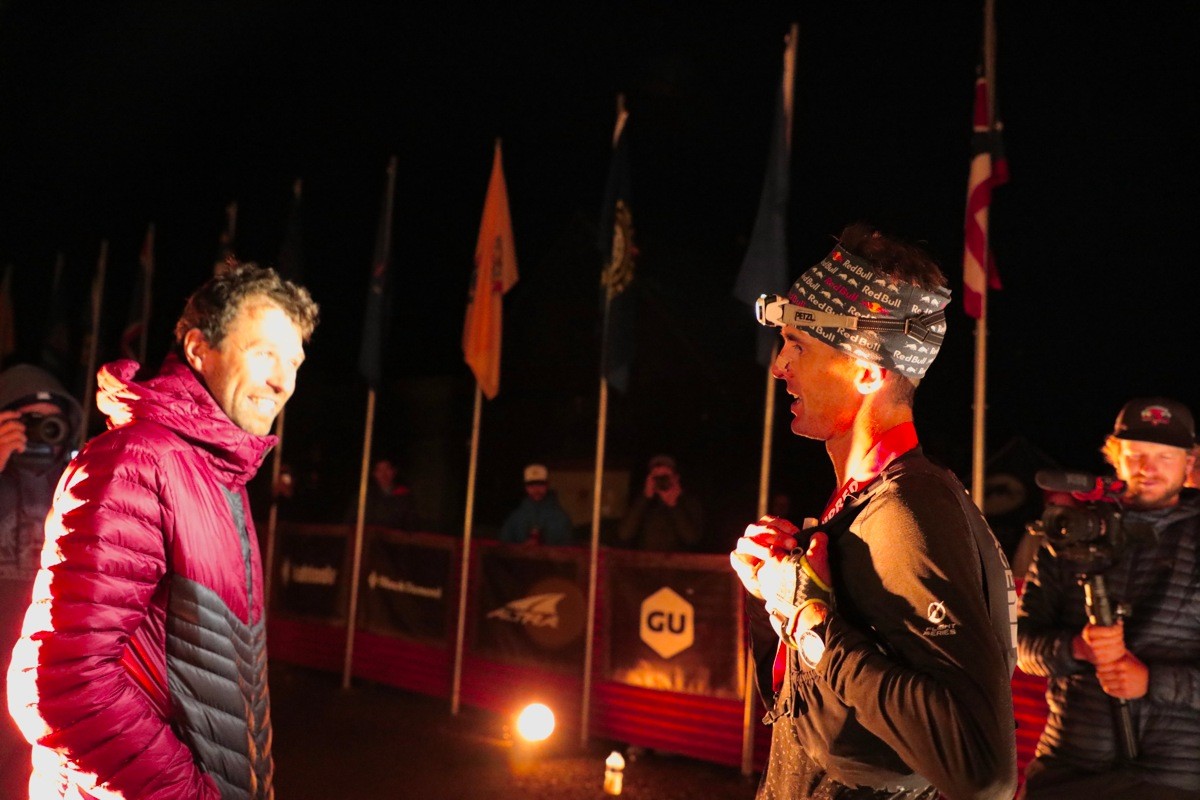
Dylan Bowman of Portland, Ore. took second place, exactly one hour behind D’haene, in 22:45:50. and Ryan Smith of Boulder, Colo. was third, in 23:24:29. All three finished faster than Jornet’s counterclockwise course record of 23:28:00, set in 2015, and D’haene bettered Jornet’s overall record of 22:41:33 from 2014.
Darcy Piceu of Boulder was the second woman to finish, in 32:08:17. Piceu has finished first or second in all eight of her Hardrock finishes. Meghan Hicks of Moab, Utah finished third, in 33:04:59.
D’haene is a three-time UTMB winner (2012, 2014 and 2017), among other titles, and Bowman has twice won the Ultra-Trail Mount Fuji, in 2016 and 2019. Both are Hardrock first-timers. D’haene was paced for the 30-mile section from Grouse to Telluride by Jim Walmsley, who won his third consecutive victory at Western States just three weeks ago and is now training for UTMB.
The second First-timer and favourite Courtney Dauwalter did not finish, dropping out at mile 62. Mike Wardian finished in 26th place, in 36:00:25.
Mario Festival of Calgary, who also dropped out at Ouray, appears to be the only Canadian entry.
Top 10 men
François D’haene 21:45:50
Dylan Bowman 22:45:50
Ryan Smith 23:24:29
Julien Chorier (2011 winner, 2nd in 2014) 25:56:57
Jeff Browning (2018 winner) 26:58:16
Nick Pedatella 28:27:47
Troy Howard 28:33:51
Trevor Fuchs 29:19:42
Kevin Shilling 30:33:20
Mick Jurynec 30:33:20
Top 10 women
Sabrina Stanley 27:21:48
Darcy Piceu 32:08:17
Meghan Hicks 33:04:59
Olga Nevtrinos 36:35:26
Heather Brooks 38:09:00
Betsy Nye 39:36:00
Pam Reed 41:56:00
Barbara Olmer 43:22:00
Marta Fisher 45:21:47
Betsy Kalmeyer 45:47:17 her second time racing Hardrock. Stanley was sixth overall, and was on pace for a course record until approximately mile 80.
by Running Magazine
Login to leave a comment
2021 Hardrock 100 Preview
Come the morning of Friday, July 16, 146 lucky runners will set off for 100 miles of beauty and challenge through southwestern Colorado’s San Juan Mountains in the Hardrock 100. Along the way, they’ll climb (and descend) 33,000 feet, all at elevations of up to 14,000 feet. The course switches direction with each event edition, and 2021 sees the route run in a counterclockwise direction.
Despite the insistence of some that it’s a ‘run’ rather than a ‘race,’ there’ll certainly be some at the front of both fields going for the win or another top position. This year’s edition will feature strong women’s and men’s races for the win, even if there’s not the competitive depth that the larger fields of other events allow. In the women’s race, we’ll see defending champ Sabrina Stanley challenged by Hardrock newcomer Courtney Dauwalter and three-time winner Darcy Piceu. The men’s returning champion, Jeff Browning, may have even taller task in holding off a pair of talented Hardrock first timers in François D’haene and Dylan Bowman. We dive into the details of each field below!
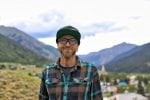
2021 Hardrock 100 Women’s Preview
Despite only 16 of the 146 runners slated to start this year’s Hardrock at the time I’m writing this, it wouldn’t surprise me if three of this year’s overall top 10 were women. In fact, we could see a pair in the top five if things play out just so.
It’s also worth keeping Diana Finkel’s course record of 27:18:24 from 2009 in mind. She set the course record traveling in the counterclockwise direction, the same direction as this year’s event. It’s also fun to note that the three-fastest ever women’s times at Hardrock were run in this counterclockwise direction.
Although she’ll be a Hardrock rookie, Courtney Dauwalter has to be the women’s favorite at this year’s race. In recent years, she’s won the 2019 UTMB, 2019 Madeira Island Ultra Trail, 2018 Western States 100, and 2018 Ultra-Trail Mount Fuji 100 Mile. Just a few week ago, she set a new course record at the San Juan Solstice 50 Mile, run not far to the east of the Hardrock course. What’s more, Courtney now bases herself up at 10,200 feet in Leadville, Colorado, so she’s plenty accustomed to the thin air she’ll find along the Hardrock cour
Sabrina Stanley returns to Hardrock as the defending women’s champion, having won the 2018 race in 30:23. Since then, she’s won the Hurt 100 Mile (2019) and Diagonale des Fous (2019) along with the shorter Mount Cheaha 50k in February 2020 and Quest for the Crest 50k this May. Last year, Sabrina managed to set the women’s supported FKT for Nolan’s 14—twice. A resident of Silverton, Colorado, she’s fully acclimated to the altitude and knows the course well.
If there’s a current Queen of Hardrock, it’s Darcy Piceu with her three Hardrock wins (2012-14) among her seven finishes while she continues to be a near lock for the women’s podium any given year. Indeed, she finished second in 2015 and 2017, her two most recent runs at the race. More impressively, she has twice as many sub-30 hour Hardrock finishes (six) than another other woman (Diana Finkel has three), and, as far as consistency, Darcy has finished all seven of her Hardrocks between 28:57 and 30:15!? Back in 2018, Darcy won both the Andorra Ultra Trail and Angeles Crest 100 Mile. Darcy did battle a serious injury earlier this year, but bounced back with a win at the Jemez 50 Mile in late May and a second at the Squaw Peak 50 Mile in mid-June.
Meghan Hicks has a pair of Hardrock finishes, with a rough 39-hour finish in 2015 and an improved 34:25 in taking fifth in 2016. In 2016 and again in 2020, she set the then women’s supported FKT for Nolan’s 14. This spring, she took third at Scout Mountain 50 Mile. More important, she’s been living and training on the course since March.
2021 Hardrock 100 Men’s Preview
While this will be his first time running the race, that makes France’s François D’haene no less of a favorite to win this year’s Hardrock. Why? He’d be on a very short list of best mountainous 100-mile trail runners in the world with three wins at UTMB (2012, 2014, and 2017) and four wins at Diagonale des Fous (2013, 2014, 2016, and 2018). Without Kilian Jornet, Xavier Thevenard, or, maybe, Jim Walmsley (he knows these mountains well) here, it’s François’s race to lose outside of the San Juan Mountains and the challenges they hold taking it from him. After a light 2020, François tuned up for Hardrock in taking third at the 112k Ultra Cabo Verde Trail in May. It’s worth noting that when snow canceled Hardrock in 2019, he came over and spent a few weeks training on the Hardrock course anyway and he’s back in the area acclimating and scoping the course for at least two weeks again this year.
After trying to get in for seemingly forever, Dylan Bowman will be another Hardrock rookie challenging for the men’s win. Bowman’s damn good at mountainous 100 milers and spent plenty of years living and training in the Colorado Rockies. Among the reasonably recent results that show his chops in the mountains are a third at Transgrancanaria in 2020, wins of Ultra-Trail Mount Fuji in 2016 and 2019, and a seventh at UTMB in 2017. While he lives in Portland, Oregon these days, he’s been living at altitude in Mammoth Lakes, California and training in the Sierra Nevada for much of the past month.
Jeff Browning returns to Hardrock as the defending champion, from winning in 26:20 back in 2018 following the disqualification of Xavier Thevenard. Among his three other Hardrock finishes, he took fourth in 25:42 in 2016 and fourth in 26:58 in 2014. Earlier this year, he won the Zion 100 Mile. Late last month, Browning dropped out midway through the Western States 100 due to dead quads and wanting to save something for Hardrock. In 21 years of running ultras, it’s only the second time he’s DNFed a race, with the other being due to a sprained ankle at UTMB 2015. Browning will be 49 years old on race day.
High-altitude 100 milers seem to suit Ryan Smith, who won Leadville in 2019 and High Lonesome in 2018. Going back a few years, Smith was ninth at UTMB in 2015 and 22nd there the following year. Other top results include fifth at the shortened to 47k Ultra-Trail Mount Fuji in 2016 and 16th at the 85k Trail World Championships at Penyagolosa in 2018.
One shouldn’t underestimate Trevor Fuchs on a mountainous 100-mile course. He’s won the Hurt 100 mile in 2020, taken second at the Bear 100 Mile in 2019, and won the Wasatch 100 Mile in 2016 and 2017. I’m looking forward to finally seeing Trevor race in person.
Although it’s been quite a while, Julien Chorier has twice run Hardrock, winning in 2011 in 25:17 and taking second to Kilian Jornet in 2014 in 25:07. This Frenchman may no longer be able to run that fast of a time, but he continues to have success, placing ninth at TDS and seventh at Ultra Pirineu in 2018 and finishing fourth at Transgrancanaria and 17th at UTMB in 2019. Earlier this year, Chorier took 13th at Transgrancanaria.
If you’re going to follow this year’s Hardrock, you should know Troy Howard, who finished third in 2018 after finishing second in both 2009 and 2013. One could be worried that he took 14th at the relatively small San Juan Solstice 50 Mile in late June, but he was 12th there in 2018 ahead of his third place at Hardrock. Troy simply knows what he needs to do for a good finish at Hardrock. I should add that Troy will be 48 years old on race day. That goes along with Browning at age 49, Smith at 42, and Chorier at 40. That’s a solid masters field right there!
by I Run Far
Login to leave a comment
2021 Western States 100 Men’s Race
It would have taken a lot to convince most everyone to bet against Jim Walmsley (pre-race interview) this year. And yet some of us still somehow did, because Walmsley took an unconventional path to 2021 success. But we all should have known better.
With many of the international men choosing not to make the trip over the various ponds, it was going to be a showdown of domestic talent. Listening to Walmsley talk before the race, it was clear he was in a good place mentally and physically. An IT band injury in the spring may have cut down on his training volume, but in the end, it may have ended up being a blessing in disguise. He went into the race with the experience of two well-executed States performances, and he surely he drew on that knowledge to put together a smart and measured race from start to finish.

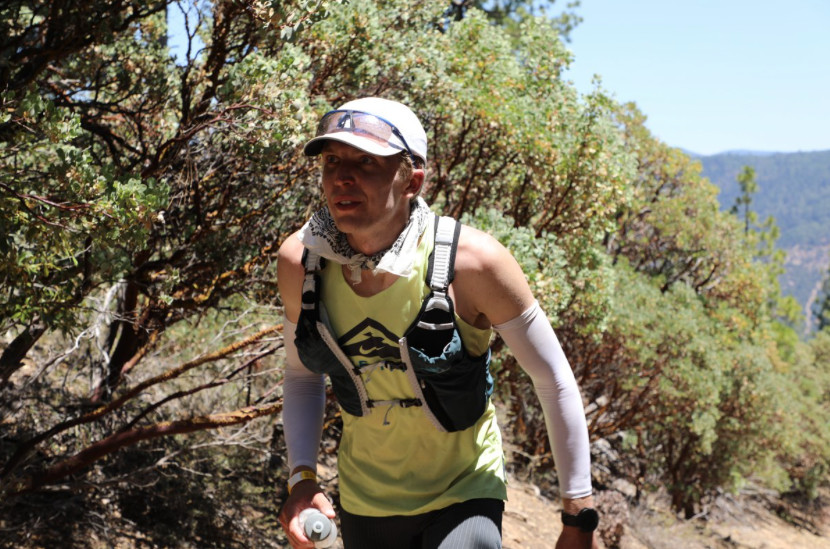
Hayden Hawks (pre-race interview), on the other hand, was making just his second attempt at the 100-mile distance. But after setting a course record at the JFK 50 Mile last fall and a solid block of training leading up to Western States, he was out to race and win. Jared Hazen (pre-race interview) was hoping that fourth time would be the charm for Western. After a third and a second in previous years, he hoped that a training block that started in February would deliver results.
It didn’t take Walmsley long to make it the 3.5 miles up to the Escarpment. He was accompanied by Hawks and followed closely by Hazen. This order was entirely unsurprising given that all three men had the confidence to try to win the race.
Early on at Red Star Ridge at mile 15, Hawks and Walmsley were already running three minutes under record pace, the lack of snow clearly saving them time. Hazen followed in third two minutes back with other race favorites Tim Tollefson (pre-race interview), Matt Daniels (pre-race interview), and Mark Hammond close on his heels. Just under an hour later at Duncan Canyon, Walmsley and Hawks had pushed the pace another four minutes under record pace, both running smooth at 24 miles in.
By Robinson Flat at mile 30, Walmsley’s pace had become too much for Hawks. He passed through five minutes under course record pace and 45 seconds in front of Hawks. By this time, Tollefson, running toward his childhood home in the foothills of the Sierra Nevada, had moved into third, just over 12 minutes back, looking very relaxed. Thirty seconds later, Hazen came through, already looking decidedly rough.
Sometime before mile 38, Walmsley had donned a bucket hat and continued to cruise at six minutes under record pace, slowly pulling away from the rest of the field. Hawks held the gap to just six minutes while Hazen and Tollefson joined forces nearly 17 minutes back. The likes of Alex Nichols (pre-race interview), Drew Holmen, and Max King stayed close, just another seven minutes back.
By mile 50, Walmsley had put eight minutes into the course record. Maybe it was the bucket hat, but the only word to describe his appearance was relaxed. It was a full 26 minutes later before second place Hawks rolled through, still seemingly running within himself. Nichols led Tollefson through, both looking strong. Hazen continued to suffer, dropping back to fifth.
By the time the leaders rolled through Foresthill at mile 62, it was 93 Fahrenheit in the shade and 97 in the sun. It was time for the heat management strategies to come into play. “It’s not the heat, it’s the hills,” said Hawks, coming through after losing 10 minutes to Walmsley in the previous five miles. He was now 48 minutes back and had Nichols to contend with who was slowly closing the gap.
That ever-infamous Cal Street, stretching between Foresthill at mile 62 and the Rucky Chucky river crossing at mile 78, is where the day started to catch up to Walmsley—just a little bit. At the Cal 2 aid station, he’d given back his advantage on the course record. From there on out, he moved faster than everyone else behind him, but slower than a 2019 Walmsley.
By Green Gate at mile 80, Walmsley was five minutes over course-record pace. But Hawks came through a full 77 minutes back. A surging Holmen was just 11 minutes behind and didn’t even stop. This was his first attempt at 100 miles, and he’d clearly done his homework on pacing and patience. Tyler Green was close behind. With a 14th-place finish at Western States in 2019, Green was on a mission to do better.
By the time Walmsley made it to Robie Point, just a mile to go, and with the course record was off the table, he stopped for a Coke and walked the climb. He would continue to cruise the final mile in his bucket hat to win his third Western States in a row with a time of 14:46:01.
Behind him, the race for the podium stayed intense. Somewhere between Green Gate and Pointed Rocks at mile 94, Hawks disappeared from the front of the race, leaving Green in second place with Holmen chasing just six minutes back. Cody Lind followed in fourth and just 17 minutes back.
At the end, Green would hold off Holmen with a time of 16:11:00 to take second, a massive jump up from his 2019 finish. Holmen completed the podium with a time of 16:23. Both had started off conservatively and had it pay off in the end.
Lind would finish fourth in 16:49:40, an impressive run for his first 100 miler and first attempt at Western States. He clearly had insider’s knowledge as the son of two-time Western States finisher Paul Lind and the grandson of the event’s original medical director Dr. Bob Lind.
Tollefson rounded out the top-five men with a time of 16:55:49. He’d put off running Western until he felt ready to do the race justice, and clearly, he was ready. The fact that he’d grown up in the area and run the last miles of the course hundreds of times certainly paid off in the race’s most difficult miles.
In the back half of the men’s top 10, we had sixth-place Kyle Pietari, who executed yet another well-played top-10 performance, Stephen Kersh who finished seventh for the second time in a row after curiously bouncing around almost all the top-10 positions over the course of the day, and Hawks who ultimately crossed the line in eighth place after experiencing physical struggles and a long stay at the mile 94 aid station to regroup.
Among the day’s breakout runs was ninth place Kyle Curtin, who moved up into the top 10 late. And Nichols rounded out the top 10 in what looked like a difficult finish after an even more difficult day.
And just to clear the air for those wondering, Daniels DNFed at mile 55. Hazen and Jeff Browning left the race at mile 62. And Hammond and King tapped out at mile 80.
by I Run Far
Login to leave a comment
The Western States 100 Is Back and It’s Going to be HOT!
Western States is famously competitive - and this year is shaping up to be one of the toughest competitions yet with hot temps, and a stacked field.
Jim Walmsley and Magda Boulet will be back at the Western States Endurance Run this week.
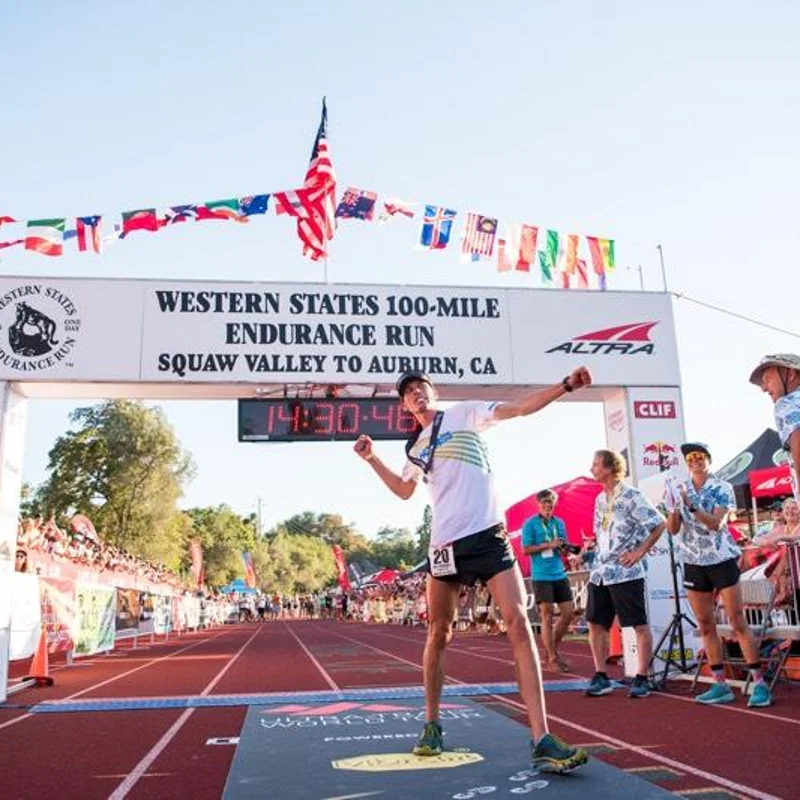
And so will Clare Gallagher, Patrick Reagan, Max King and Brittany Peterson. And, so too is race pioneer Gordy Ainsleigh and 312 other inspired runners who have been training for more than a year and a half to get to the starting line. In fact, we’re all heading back to the Sierra Nevada range this weekend — even if vicariously — to what feels like a bit of normalcy returning.
After a year mostly away from the trail racing running scene, things are starting to feel like old times. With stacked men’s and women’s fields, scorching heat in the forecast and last year’s Covid-19 hiatus hopefully mostly behind us, it’s definitely the event the ultrarunning community has been looking forward to. The race begins at 5 a.m. PST on June 26 and it looks like it’s going to be an epic one. (Follow via live tracking or the live race-day broadcast.)
“Yeah, it will be good to be there and see people and actually be in the race,” says Walmsley, who won the race in 2018 and 2019 in course-record times. “It’s been an odd year.”
Odd for sure, but with deep men’s and women’s fields, hot weather, dusty trail conditions and the late June gathering of a few hundred runners on this hallowed ground feels somewhat normal. The mountains and canyons in and around Olympic Valley northwest of Lake Tahoe have been a sacred place for the native Washoe people for thousands of years before Gordon Ainsleigh’s first romp over the Western States Trail in 1974.
It’s been an especially odd year for Walmsley, who, for the second straight year, had planned to use the first half of his year training for the 90K Comrades Marathon in South Africa. But that was canceled last year (with just about every other big race, including the Western States 100) and this year, too.
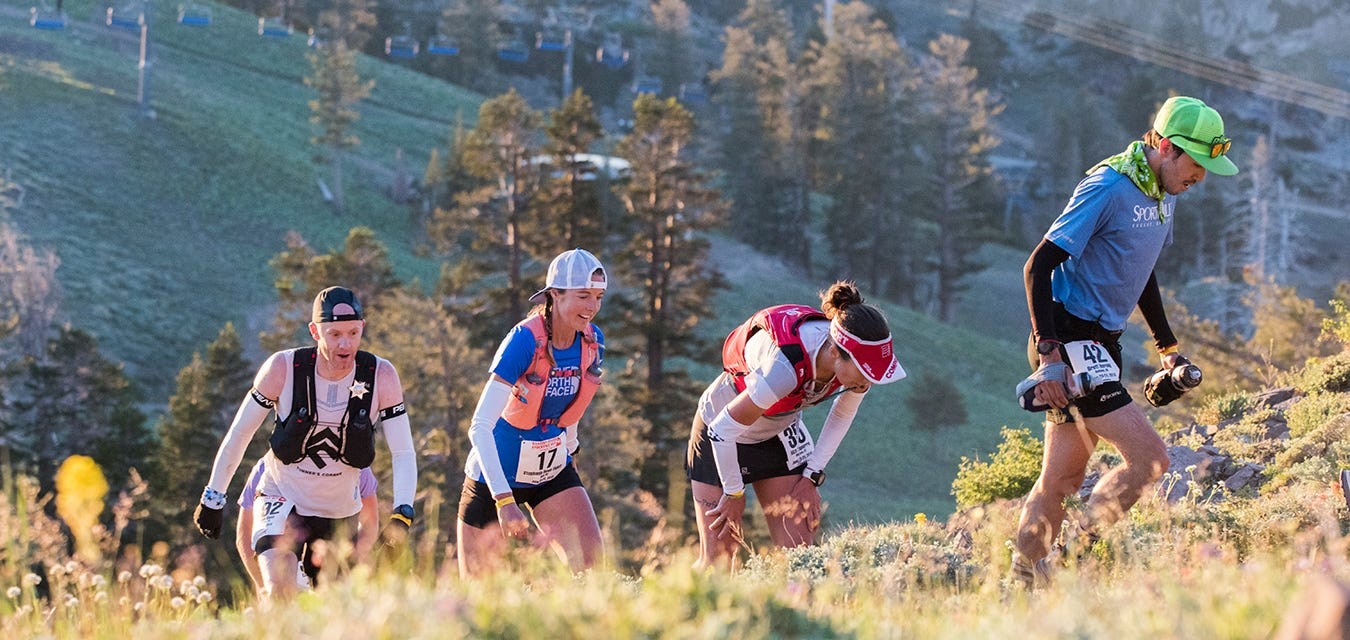
So instead, after setting a new U.S. 100K road record in January, he took a sponsor’s entry into the Western States 100 from HOKA One One and will be once again lining up in America’s most celebrated trail running race. With notable first-timers Tim Tollefson and Hayden Hawks in the mix along with Walmsley, Reagan, King, Matt Daniels, Alex Nichols, Kyle Pietari, Mark Hammond, Stephen Kersh, Jeff Browning and Jared Hazen all returning with previous top-10 finishes, on paper anyway, the men’s race is shaping up to be one of the most competitive in recent memory or maybe ever, even though it’s comprised entirely of domestic runners.
The women’s race might be even more competitive with former champions Boulet, Gallagher (2019) and Kaci Lickteig (2016) leading the way, plus elite American runners Camille Herron, Addie Bracy, Camelia Mayfield and Keely Henninger and international stalwarts Ruth Croft (New Zealand), Audrey Tanguy (France), Beth Pascall (UK), Emily Hawgood (Zimbabwe), Kathryn Drew (Canada) and Ragna Debats (Spain) joining the fray.
Who are the favorites? It’s hard to tell. Most of those runners, including Walmsley and Boulet, have admitted to having dealt with some minor injuries, inconsistent training, a lack of motivation and other setbacks over the crazy year that was. Based on what runners have been reporting, it seems like most are just eager to get back and immerse in a competitive 100-miler and see what they can do.
However, one of the keys will certainly be who can survive the heat the best. The forecast is calling for high temperatures in the upper 80s to the high 90s on Saturday after and the canyons between Robinson Flat and Michigan Bluff could even reach over 100 degrees.
Walmsley has said he’s dealt with some IT band issues and has focused mostly on running with a lot of vert, focusing on getting optimal recovery, strength sessions and body work, as well as spending as much time running in extreme heat as possible. That includes running and hiking countless laps to the summit of 9,298-foot Mt. Elden in Flagstaff, averaging 20 to 25 hours per week on the trails and also spending a lot of time on a bike trainer.
But he’s also spent a lot of time in the infrared sauna in his home and spent time with family in the Phoenix area, where he ran in the afternoons amid 115- to 120-degree heat.
“The heat training is kind of lucky for me, because growing up in the heat in Arizona, I didn’t know any different,” Walmsley says. “I just thought everyone was roasting in the heat. It’s what I grew up with and I try to lean into those memories and embrace the heat.”
Boulet, who lives in Berkeley, Calif., has also gone out of her way to train in the heat. While she says her build-up has been inconsistent compared to previous years, she’s been doing a lot of climbing and descending in the heat, and also working on box jumps to strengthen her legs for the long descent into Auburn. She says a recent 40-mile run up 3,849-foot Mt. Diablo east of Berkeley, is a good indicator that she’s ready to roll.
“I’ve definitely been spending more time in the heat lately, which is something I personally don’t enjoy running in,” says Boulet, who won the race in 2015, DNF’ed in 2016 and placed second in 2017. “But I know the importance of preparing in the heat and falling in love with running in the heat by race day. You can be as physically as ready as possible in terms of your fitness, but if you don’t have the heat training and you’re trying to tackle some of the parts of the canyons that are in the middle of the race, It’s really tough.”
Given the extreme heat, it’s not likely that anyone will challenge Walmsley’s 14:09 course record set two years ago, when it was in the low-80s and cloudy on race day. But there’s also no snow on the course this year, so the early sections that have previously forced runners to hike and walk early on will likely be faster, and that will likely result in fatigue that will slow them down in later stages of the race.
“You’ve got to take what the course gives you,” Walmsley says. “I’ve learned that you don’t fight the course where you shouldn’t. I have some splits in mind that would get me there under 15 hours and maybe close to 14:30, but it’s going to be all about feeling out what the course is giving me, following those guidelines and not forcing it. Because anyone who forces it in that heat will be doomed.”
by Outside Online (Brian Metzler)
Login to leave a comment
Western States 100
The Western States ® 100-Mile Endurance Run is the world’s oldest and most prestigious 100-mile trail race. Starting in Squaw Valley, California near the site of the 1960 Winter Olympics and ending 100.2 miles later in Auburn, California, Western States, in the decades since its inception in 1974, has come to represent one of the ultimate endurance tests in the...
more...Hardrock 100 canceled for second time in as many years
Avalanche debris in 2019, COVID-19 in 2020 wipe out famed ultra-marathon
The Hardrock Hundred Endurance Run can’t catch a break.
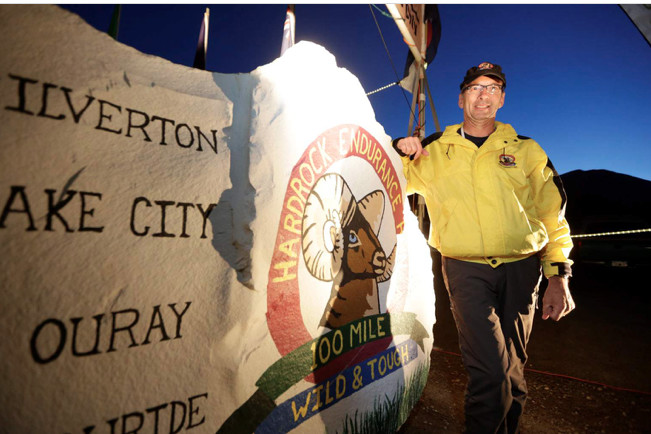
After unveiling a loaded field of U.S. and international runners selected through the lottery in December 2018, the Hardrock 100 ultra-marathon that starts and finishes in Silverton was canceled in 2019 after a winter of heavy snow left avalanche debris and dangerous high water along its 100.5-mile loop through the heart of the southern San Juan Mountains.
A year later with the same field of registered runners as 2019 set to compete, the Hardrock 100 board of directors once again had to cancel one of the world’s most iconic mountain ultra-marathons. This time, it is because of the global COVID-19 pandemic with public health orders in place prohibiting large gatherings such as the Hardrock, which has a field of 145 runners. Though it is a small field of athletes, hundreds more are involved in the form of pacers, crew members, media and run volunteers.
The Hardrock 100 continued to delay its decision until Saturday while similar events in the U.S., such as the Western States Endurance Run in California, canceled much earlier. Western States 100 made its decision March 27.
“This is a tough decision,” said Hardrock 100 director and co-founder Dale Garland in a phone interview with The Durango Herald. “I hated making it. It is not one where just sat down one day and decided to pull the plug. We realize we have an impact on the sport and the economics of the area, and it’s something done with a lot of consideration. I’m really sad, and I have heartache about it.”
The latest Hardrock 100 cancellation is another blow to Silverton, which suffered economically from the affects of less tourism because of the 416 Fire near Durango in 2018. Already in 2020, Silverton has seen the Iron Horse Bicycle Classic, which brings more than 3,000 people to Silverton on Memorial Day weekend, canceled because of COVID-19. Many businesses in Silverton remain closed with only essential visitors allowed into the small mountain town of fewer than 700 residents. In 2019, DeAnna Gallegos, the director of the Silverton Area Chamber of Commerce, said the Hardrock 100 helped deliver $1 million to the local economy.
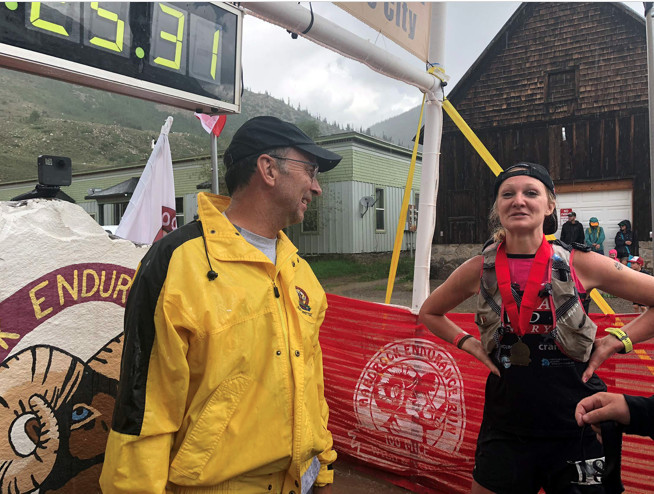
Past experience pays off
The cancellation is the fourth in Hardrock 100 history dating back to 1992. The previous cancellations were all because of natural causes. Along with the dense avalanche debris scattered across the course in 2019, the event was called off in 1995 because of too much snow and in 2002 because of extreme fire danger in the San Juan National Forest.
It was because of that first cancellation in 1995 that Hardrock is able to financially survive a cancellation, even with two in a row. After 1995, the board of directors established a reserve bank account to set aside funds in the case of another lost year.
“We just needed to make a decision by June 1, if we could,” Garland said. “Part of that is to honor people’s flight plans, vacation rentals and all those things. Also, we felt if we made a decision by June 1 we could still buy everything we needed. We hadn’t spent a whole lot of money with equipment, merchandise, awards or anything like that. So, we’re in pretty good shape and didn’t have to hit the reserve account very hard.”
A loaded field awaits fate
The run, which traverses across the rugged San Juan Mountains with 66,050 feet of elevation change at an average elevation of more than 11,000 feet, including the 14,048-foot summit of Handies Peak outside Lake City and seven mountain passes at higher than 13,000 feet, has become a legend among the world’s best ultra runners. Athletes must complete previous qualifying 100-mile races to even enter the lottery, which had a record 2,487 applicants for the 2019 race.
While U.S. stars such as Courtney Dauwalter, Dylan Bowman, Jeff Browning, Jason Schlarb, Sabrina Stanley, Darcy Piceu and Darla Askew were among those expected to run in 2019 and then in 2020, French stars Francois D’Haene and Xavier Thévenard were also highly-anticipated competitors who had gained a lottery spot.
It was expected to be the most talented field in the history of the event, and it has now been put on hold twice.
No announcement was immediately made regarding registration for the 2021 race and if it would once again carry over from the 2019 lottery or if there would be a new lottery.
“It’s up in the air,” Garland said. “That is a board decision, and it’s split. That’s why it hasn’t been decided yet. It’s been two years, so do we keep rolling people over or give 145 new people a shot at it? They’ve been waiting two years for a new lottery, as well. It’s a philosophical difference not resolved yet. We will keep people updated as soon as those decisions are made.”
Garland said making the event larger to accommodate the addition of new runners to the existing pool of 145 already selected would require discussions with the Bureau of Land Management and forest service, as that would exceed what the event’s permit is allowed. He did not indicate that there was a plan to try to increase the size of the event.
Alternative formats didn’t fit Hardrock’s image
Garland and the run committee considered alternative plans to the traditional Hardrock 100 this year. Some suggested it be conducted virtually. There was discussion of holding the event as usual but with staggered starts and without gatherings such as Camp Hardrock, the pre-race briefing and the awards banquet which would have brought all the runners together at the same time.
“I don’t think you can replicate the Hardrock experience virtually,” Garland said. “We entertained the idea, but no, we couldn’t do that. Then we looked to see if we could do it without all the experiences that make Hardrock what it is and build our community. At some point it was like, ‘What are we trying to create?’ Especially for a first time runner, we didn’t want that to be their experience.
“We also thought about doing a regional Hardrock and limiting it to the Four Corners states. But we couldn’t come to a philosophical agreement that we wanted to do something like that, either.”
While Garland said canceling the event stings, he is confident it can move forward and remain a special event. In a year in which the Ultra Trail du Mont Blanc in France and other U.S. events such as Western States and the Leadville 100 have been canceled, he believes the running community will understand.
“What does it say when we can’t do it two years in a row?” Garland said. “That’s why we wanted to wait and see as it got really close if things were going to change or not or if we could make it work. We kept trying to move forward, but we couldn’t do it.”
Login to leave a comment
Hardrock 100
100-mile run with 33,050 feet of climb and 33,050 feet of descent for a total elevation change of 66,100 feet with an average elevation of 11,186 feet - low point 7,680 feet (Ouray) and high point 14,048 feet (Handies Peak). The run starts and ends in Silverton, Colorado and travels through the towns of Telluride, Ouray, and the ghost town...
more...Strong, talented and deepest field at Western States Endurance Run at this year race
More than 350 of the world’s best endurance athletes will emerge from the cold and dark Saturday morning to stand at the start line at Squaw Valley, eager to begin the Western States 100-Mile Endurance Run from the resort to Auburn.
This year’s field of runners is one of the deepest in the history of the race, featuring the return of both the men and women’s champions along with several top-10 finishers from last year.
After coming up short in two previous bids to set the course record at Western States, Jim Walmsley, of Flagstaff, Arizona, broke through last year, finishing with a record time of 14 hours, 30 minutes, 4 seconds. Walmsley, 29, is set to defend his title this year against a deep field in the men’s division, which features eight of last year’s top-10 finishers.
Walmsley will make his fourth appearance in the race on Saturday. His attempt to break the course record in 2017 ended due to exhaustion at around mile 78. He rebounded the following year by setting the course record, and said breaking that mark could be in play on Saturday.
Walmsley said he’s also been told the early stages of the course are in better shape than they were in 2017, which had a similarly large snowpack. During 2017’s race he was also several minutes ahead of the record-breaking time he set in 2018.
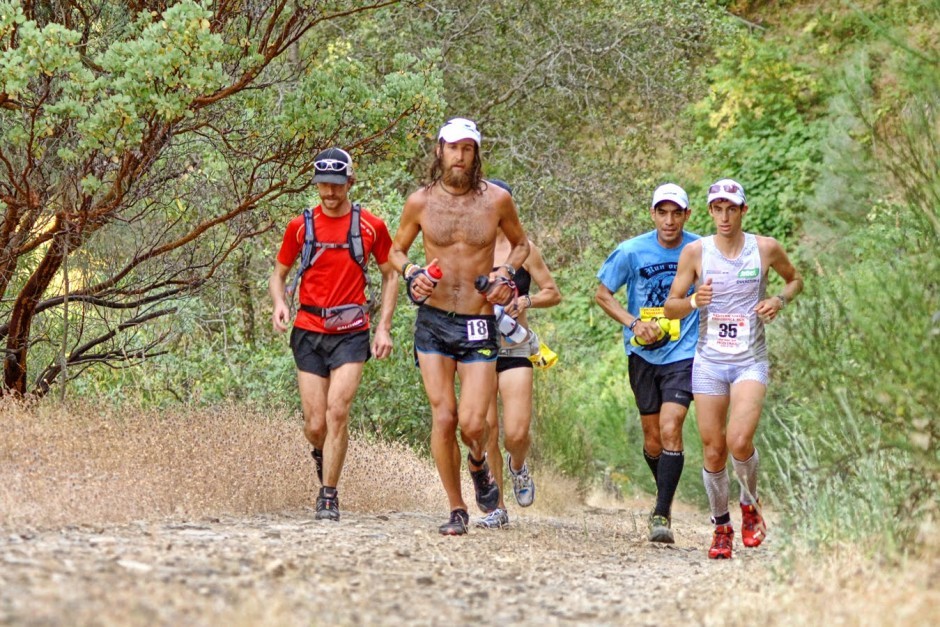
“Ultimately, it’s about listening to my own pace and just putting everything out there regardless,” he said. “As long as I end up giving my best effort and going to the well to get there, I’m always happy with it. Whether it’s the DNF in 2017 or the course record last year. I’m pretty proud of both days and the fact that I know I gave everything at both races. You can always live with that.”
Among those who could challenge Walmsley will be 2017 Western States winner Ryan Sandes. The 37-year-old South African broke through in his third attempt to win at Western States, and then ran as a pacer during last year’s event.
“I feel like it was a big thing for me to win Western States and a big achievement, so I feel pretty relaxed going into Western States from that point of view, but Western States is still one of the biggest 100 milers in the world, if not the biggest,” said Sandes. “I’ve still got that drive and hunger and I think that’s why I came back here. That’s a big motivating factor and I’m definitely hungry.”
Other top competitors on the men’s side include: Mark Hammond, Ian Sharman, Jeff Browning, Charlie Ware, Kyle Pietari, Paul Giblin and Kris Brown.
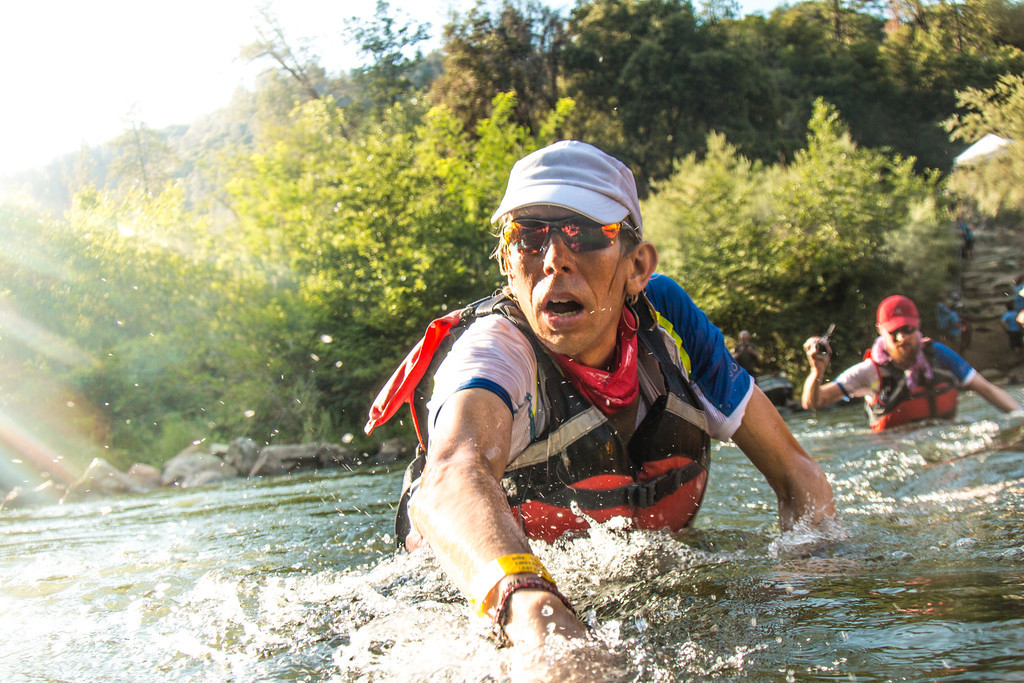
On the women’s side, defending champion Courtney Dauwalter, of Golden, Colorado, returns after winning in her first time out.
Dauwalter, 34, finished with the second fastest time ever for a woman last year, reaching Auburn with a time of 17:27:00.
Second-place finisher Katlyn Gerbin, 30, of Issaquah, Washington will also be in the field. Lucy Bartholomew, 23, of Melbourne, Australia, finished third last year and will be in this year’s field as well. Bartholomew has spent the past few weeks training in the area, and running with Truckee-Tahoe athletes at local races.
Kaci Lickteig, 32, of Omaha, Nebraska, who won in 2016, will race as well.
Other returning top-10 finishers from a year ago include: Amanda Basham, Cecilia Flori, Camelia Mayfield, Aliza Lapierre and Corrine Malcolm.
Login to leave a comment
Western States 100
The Western States ® 100-Mile Endurance Run is the world’s oldest and most prestigious 100-mile trail race. Starting in Squaw Valley, California near the site of the 1960 Winter Olympics and ending 100.2 miles later in Auburn, California, Western States, in the decades since its inception in 1974, has come to represent one of the ultimate endurance tests in the...
more...Altra Elite runner Jason Schlarb won the ultra Run Rabbit Run 100-mile race for the third time
Login to leave a comment
Jeff Browning just got into the 2018 Hardrock 100 ultra-marathon two weeks ago
Login to leave a comment
France’s Xavier Thévenard disqualified at Hardrock 100 with less than 10 miles to go
Login to leave a comment
All eyes on Xavier Thévenard for Hardrock 100
Login to leave a comment
Canadian trail ultrarunner Adam Campbell has withdrawn from the Hardrock 100
Login to leave a comment


